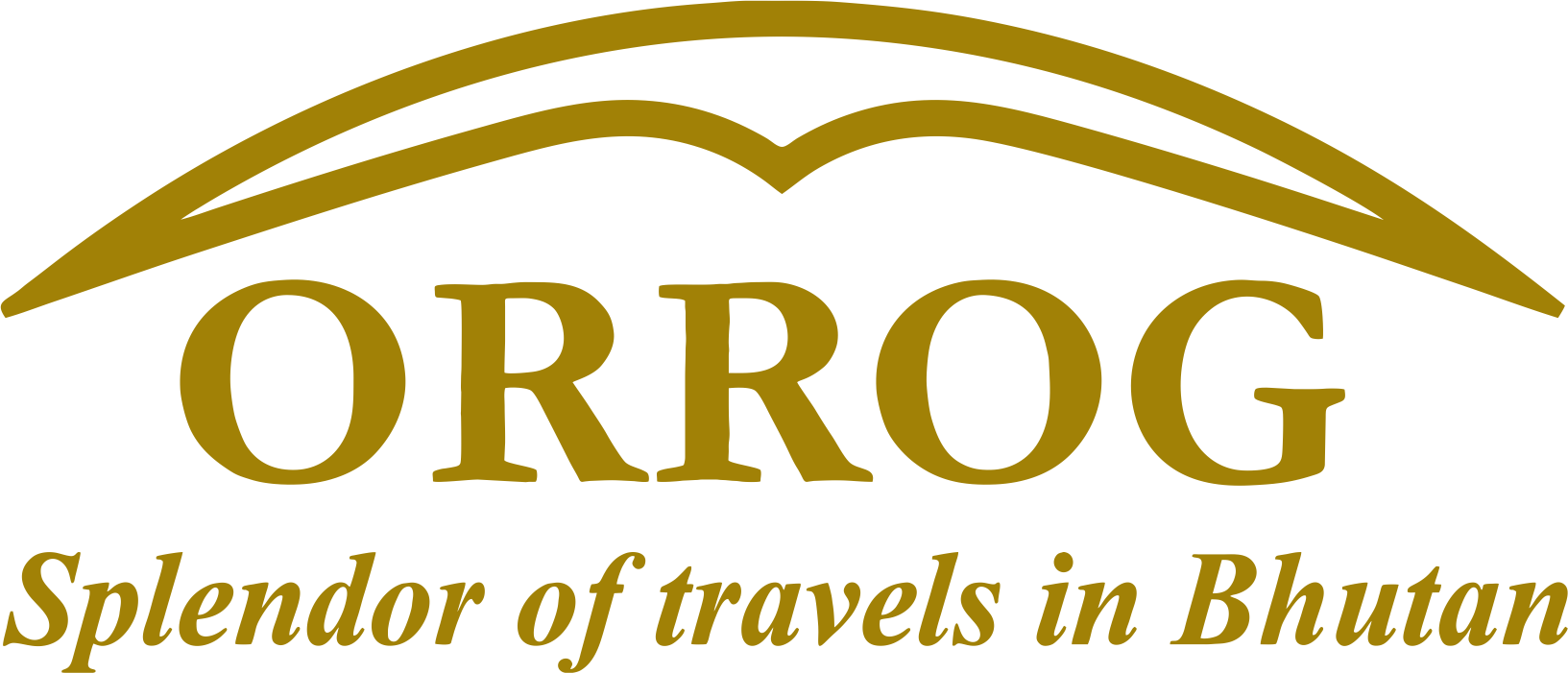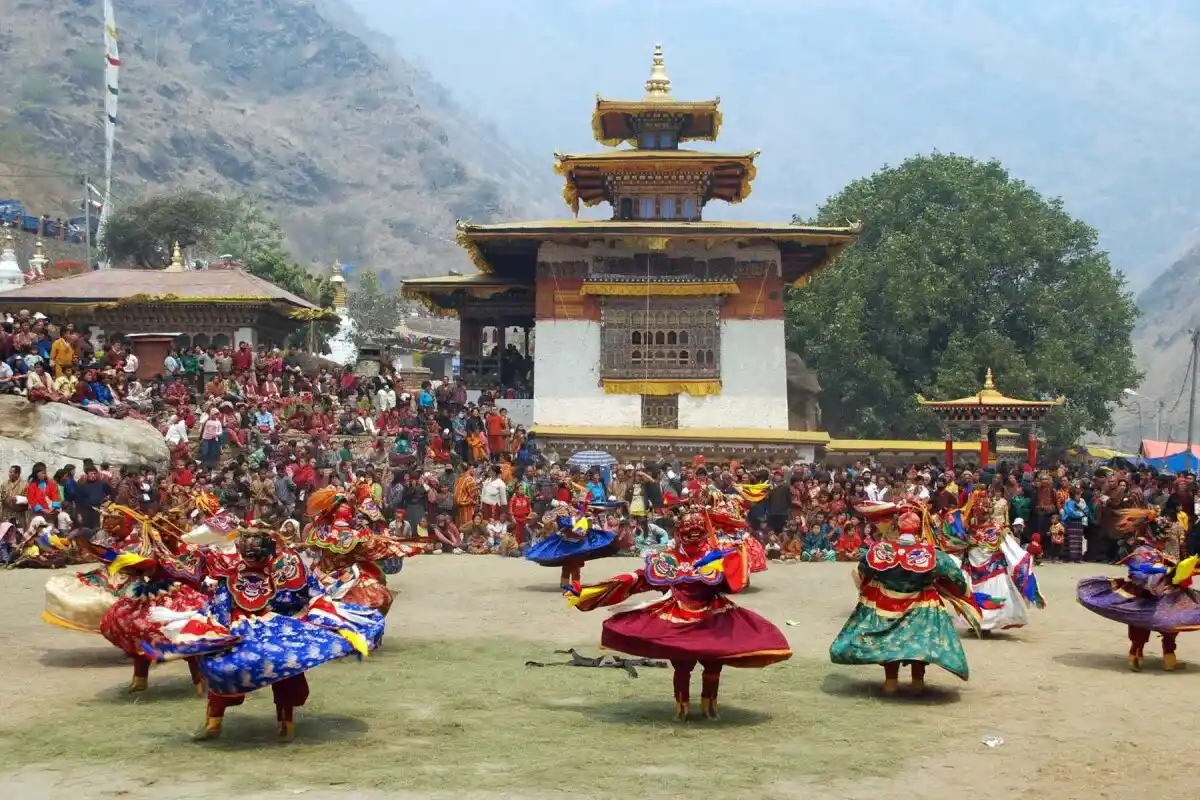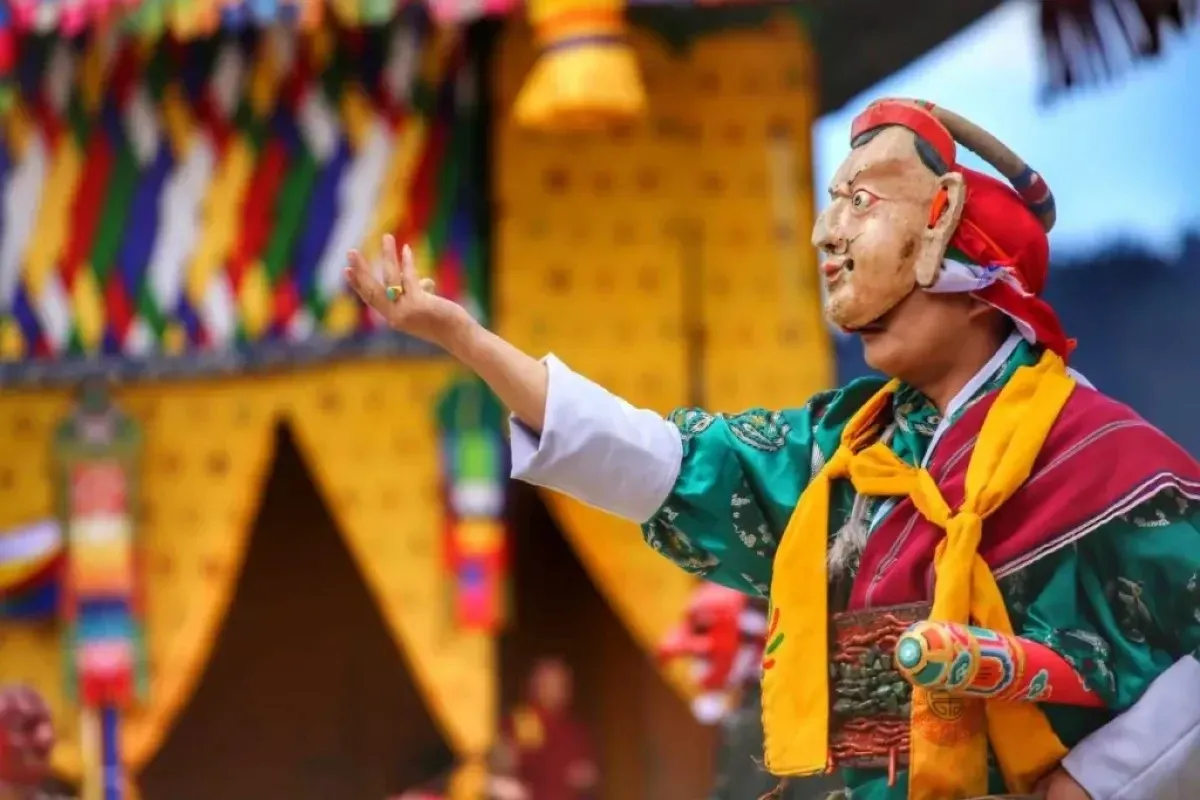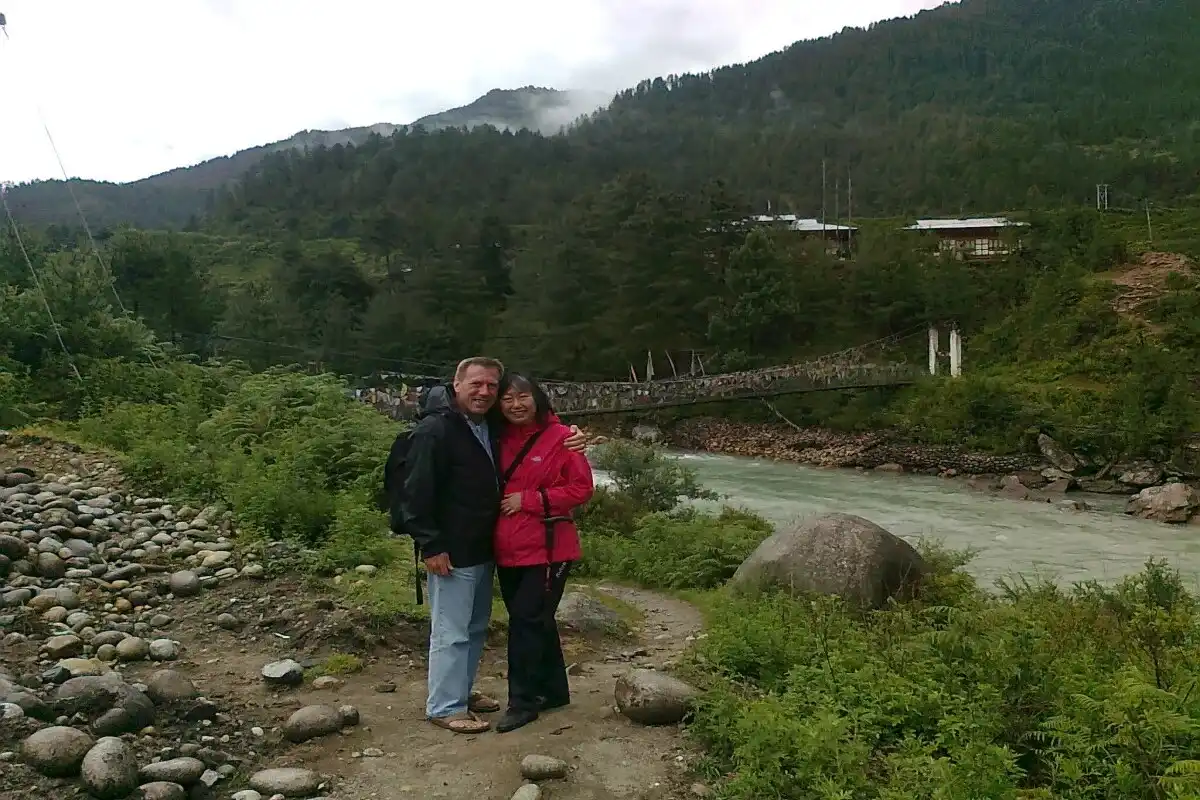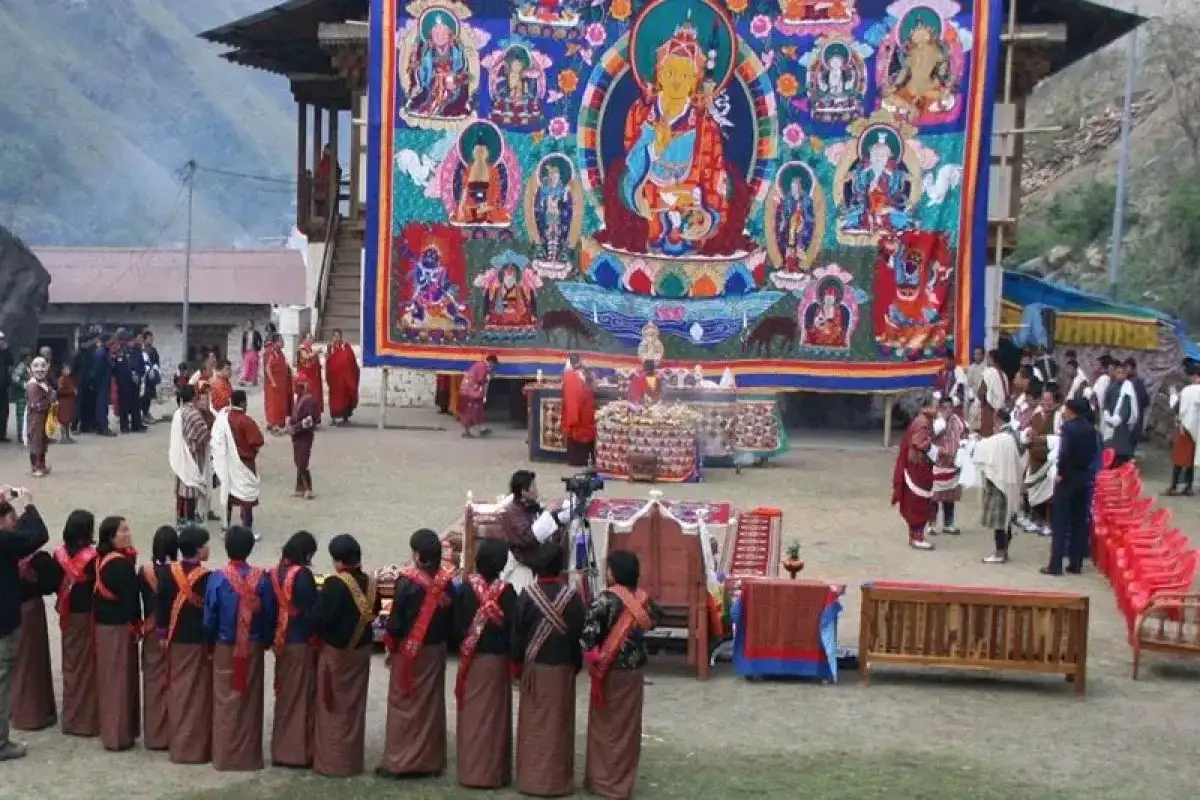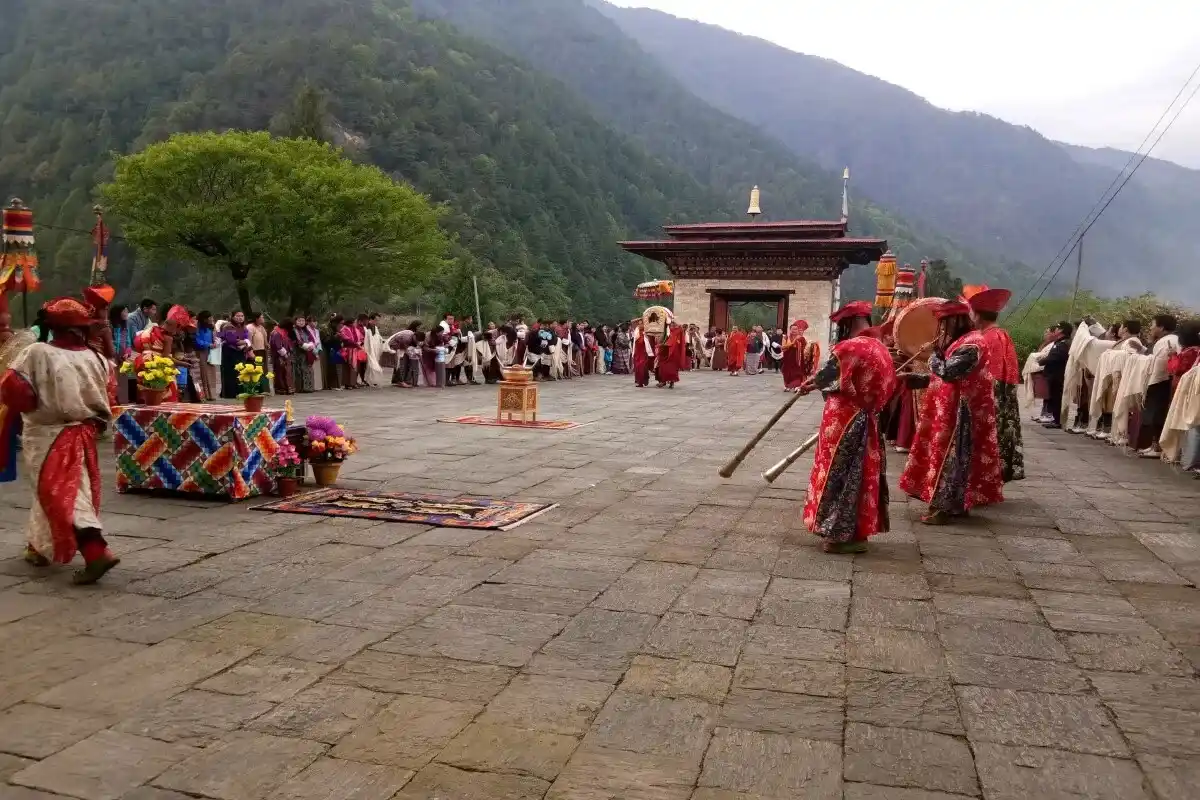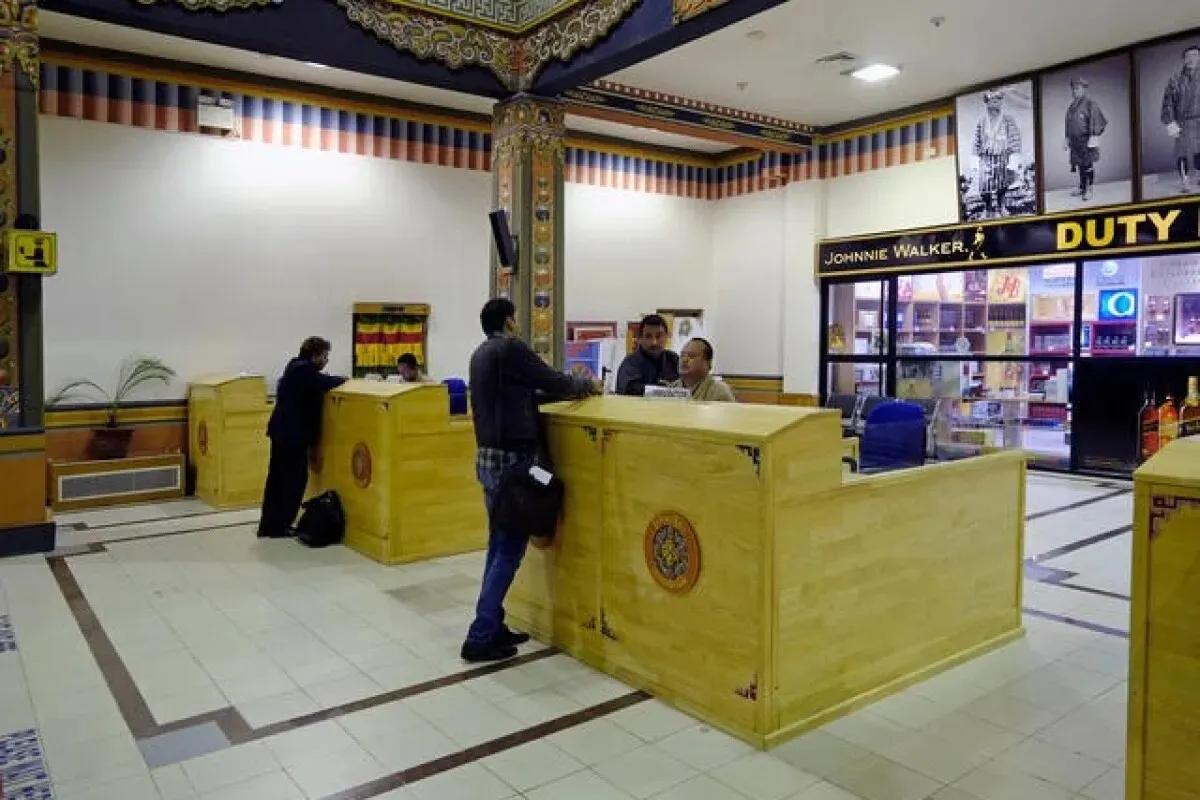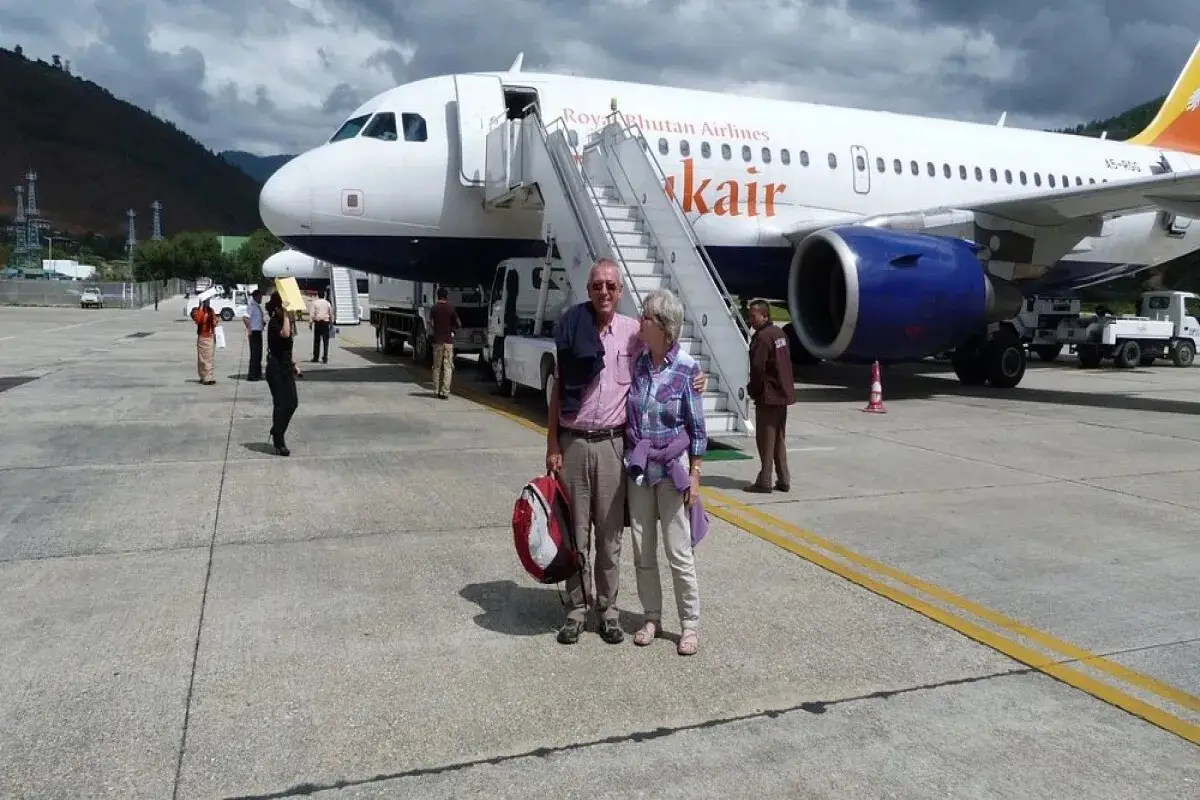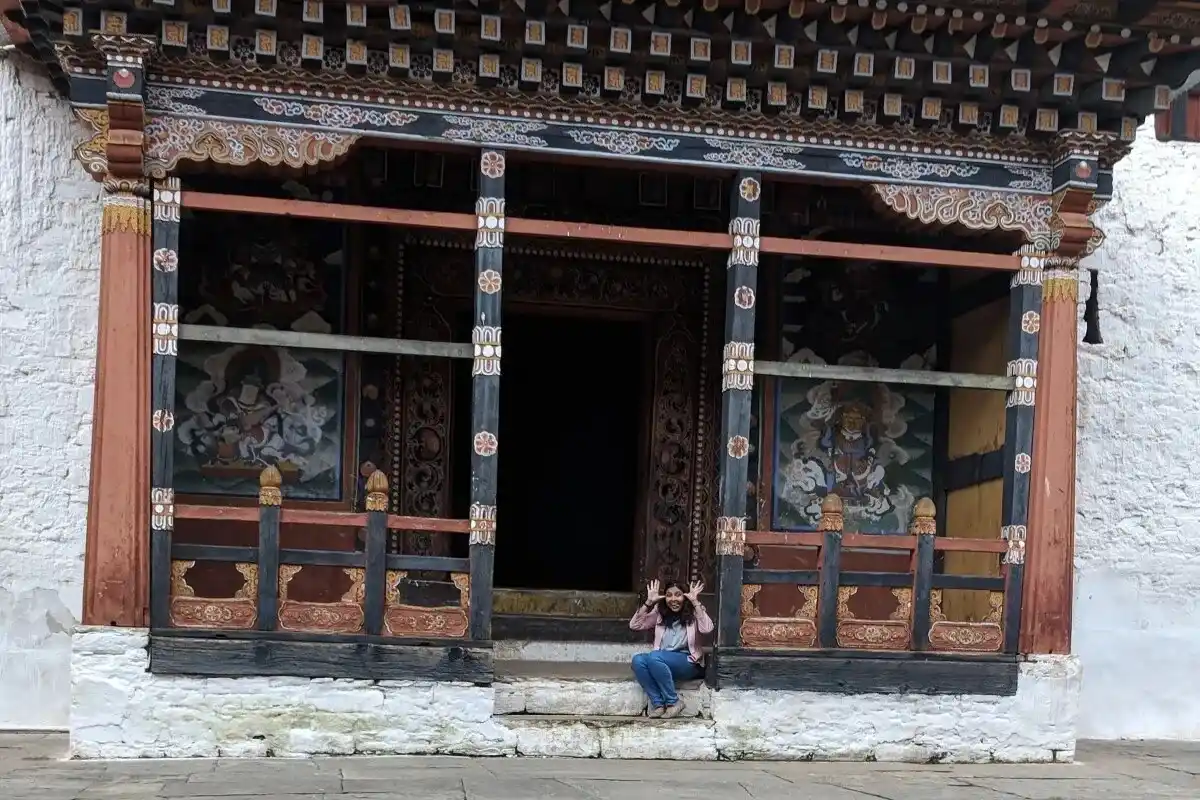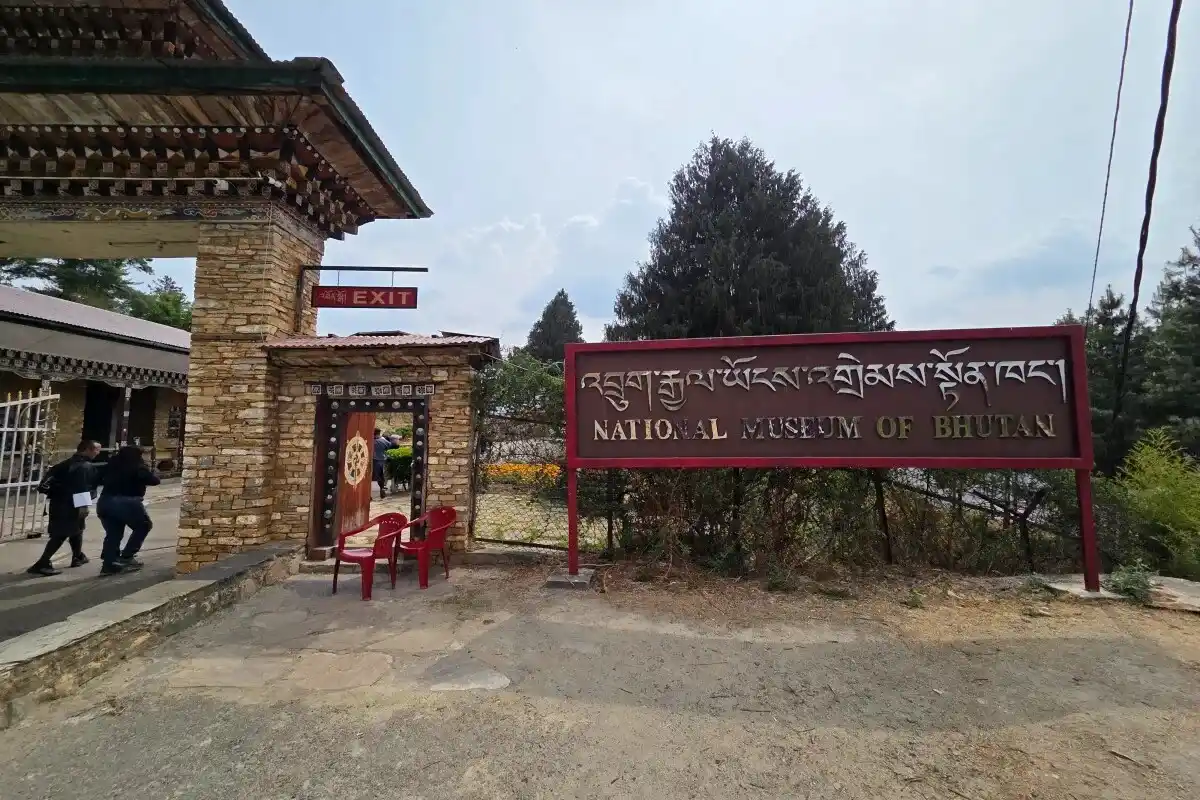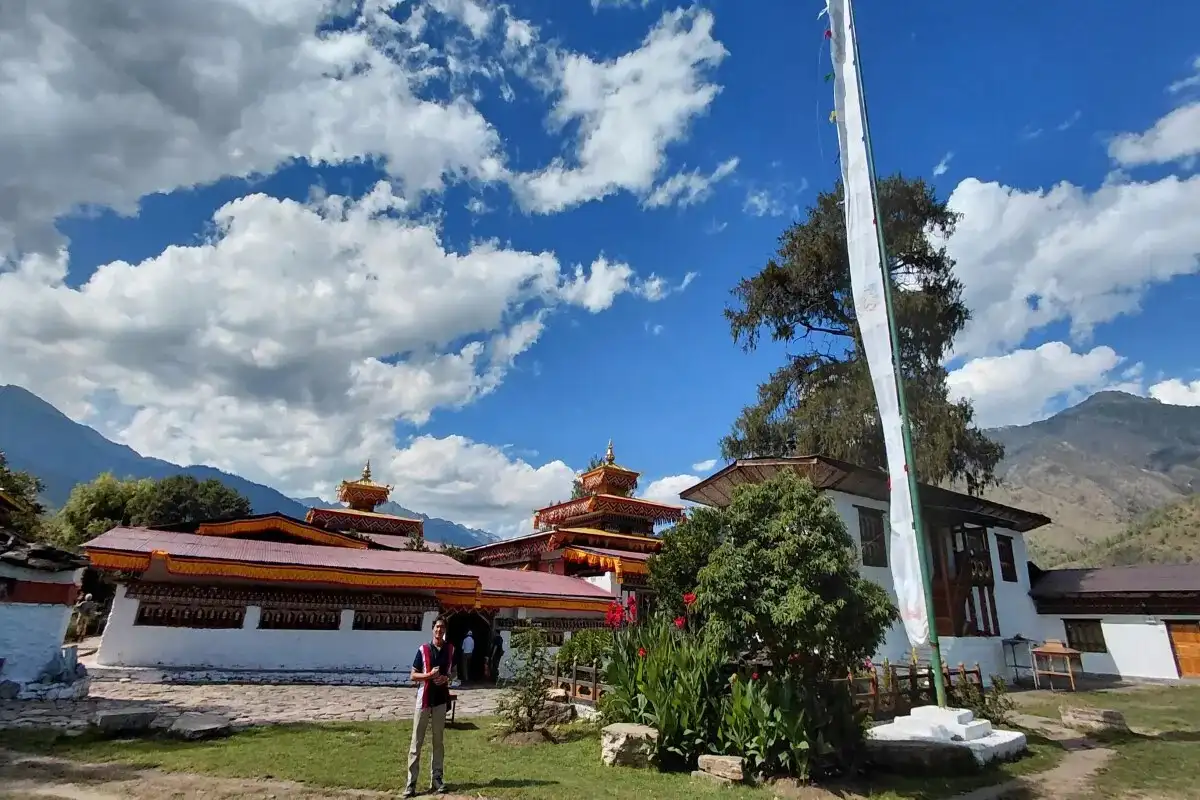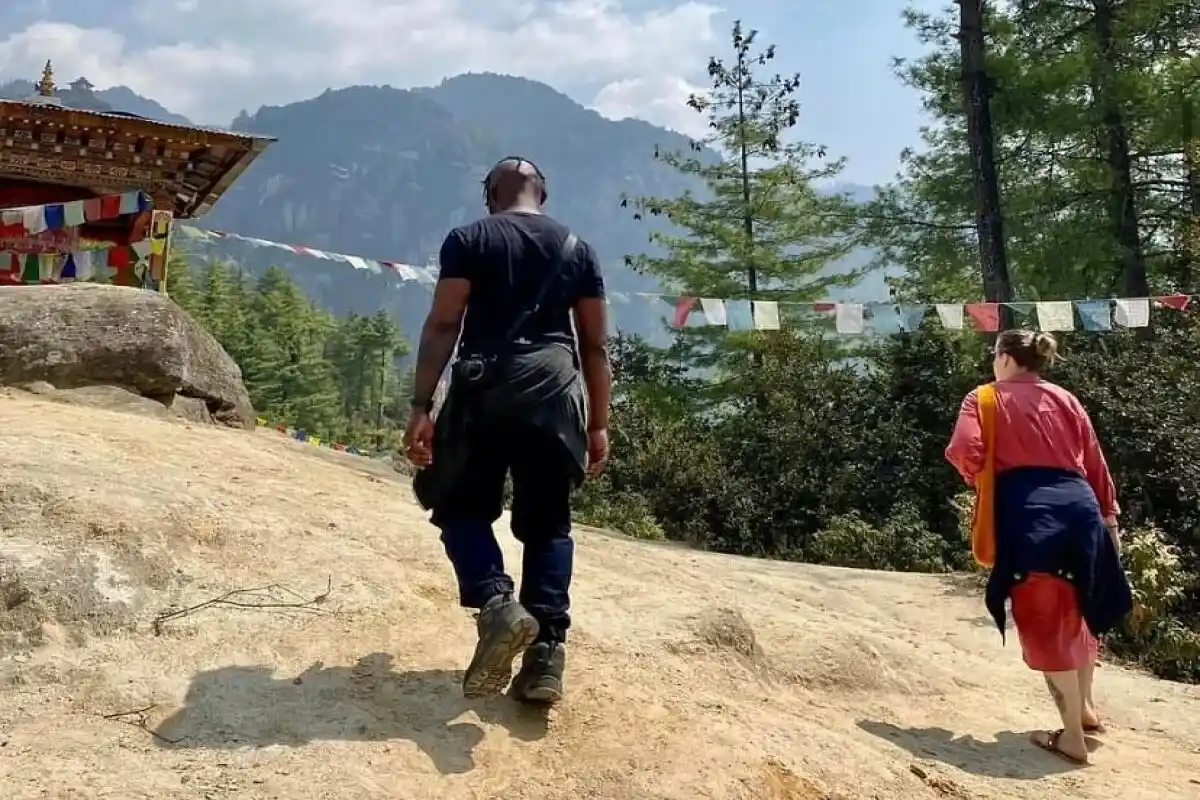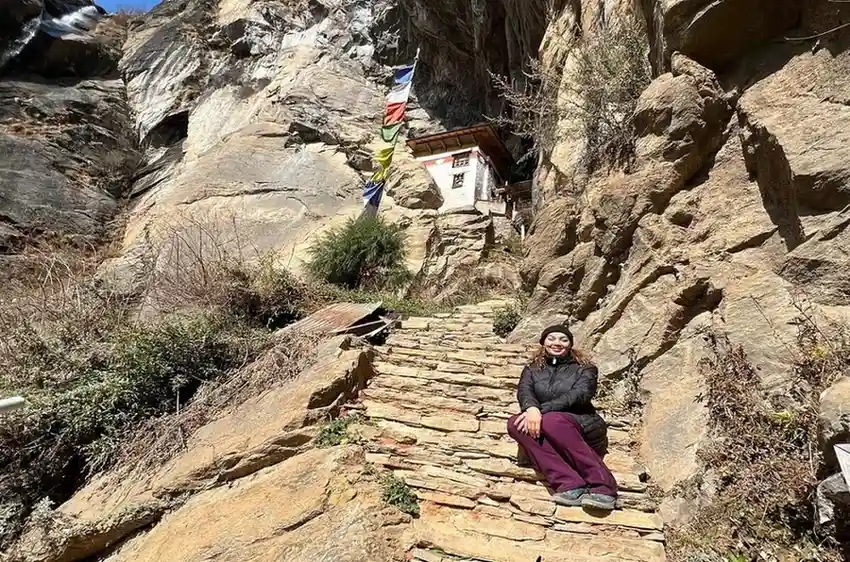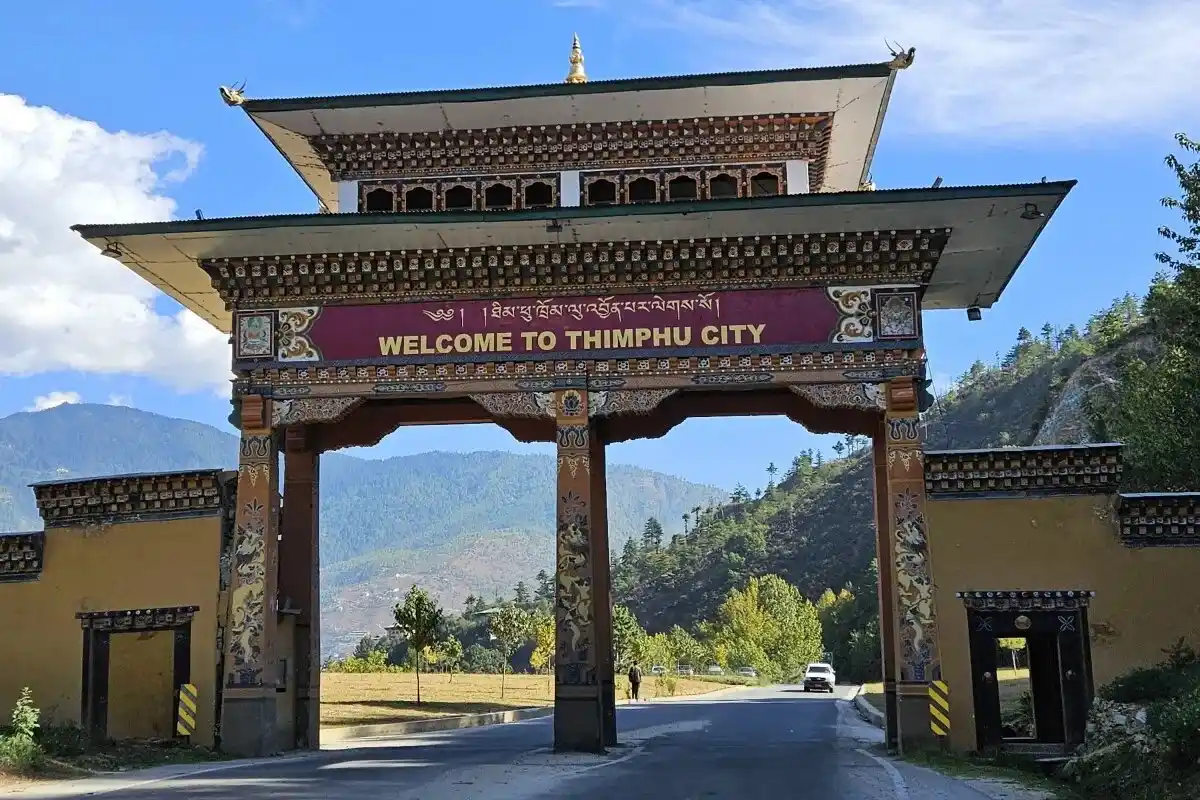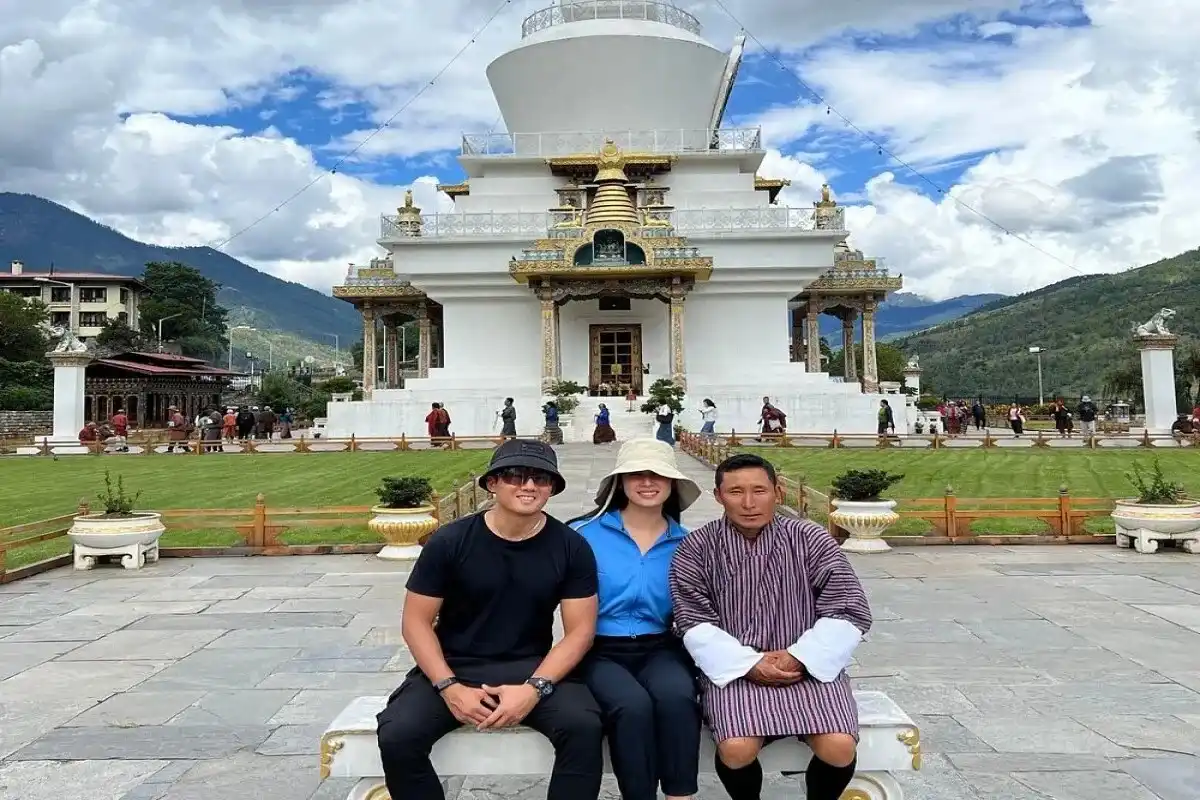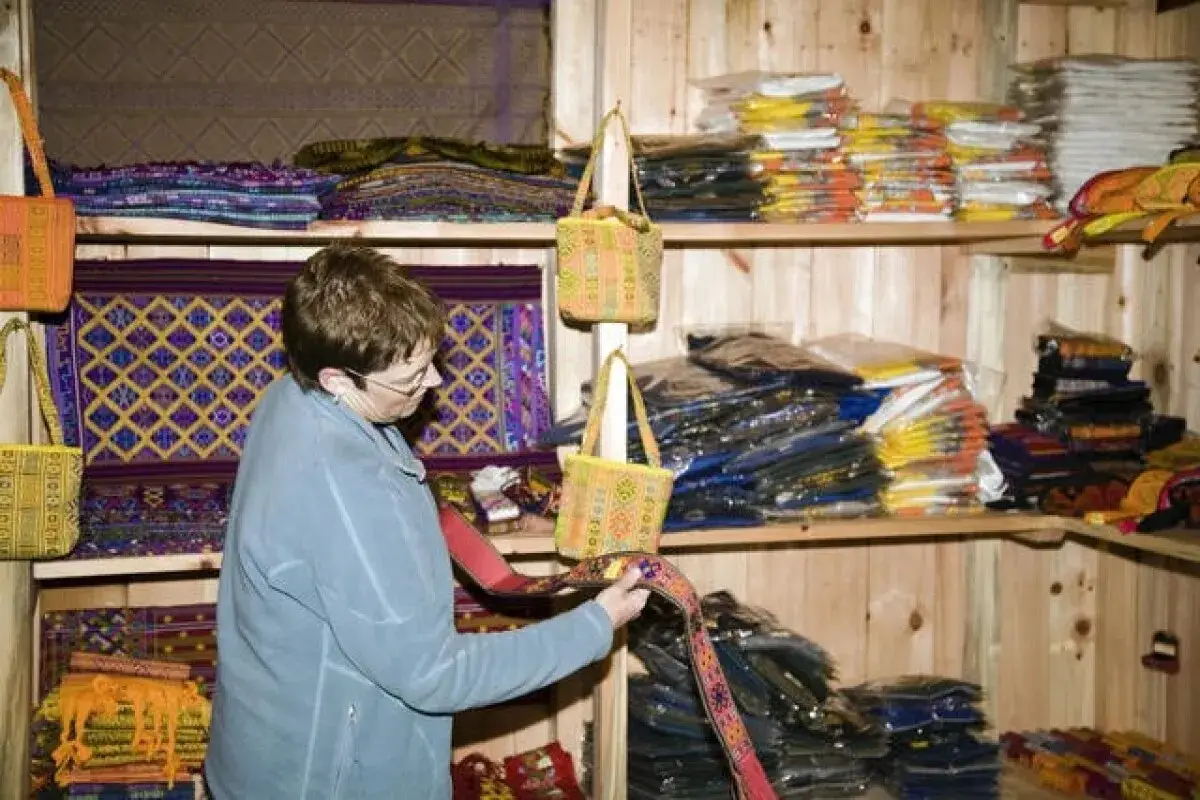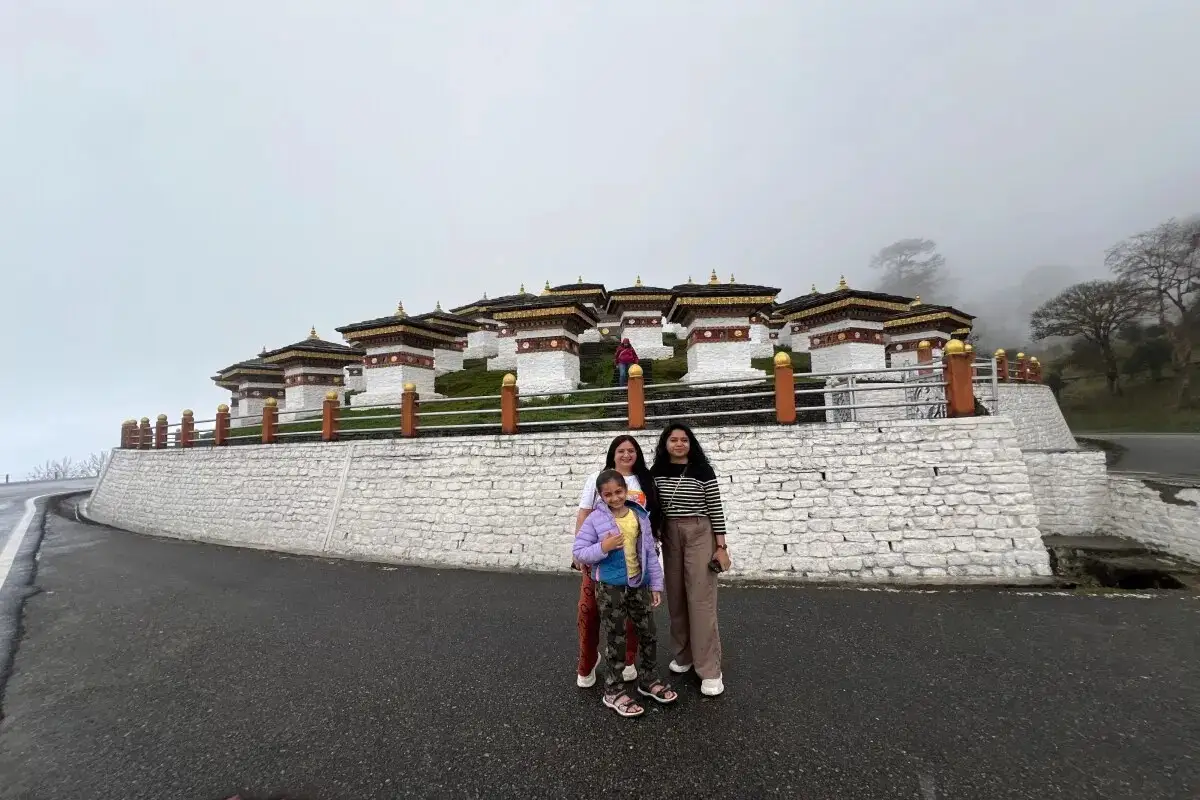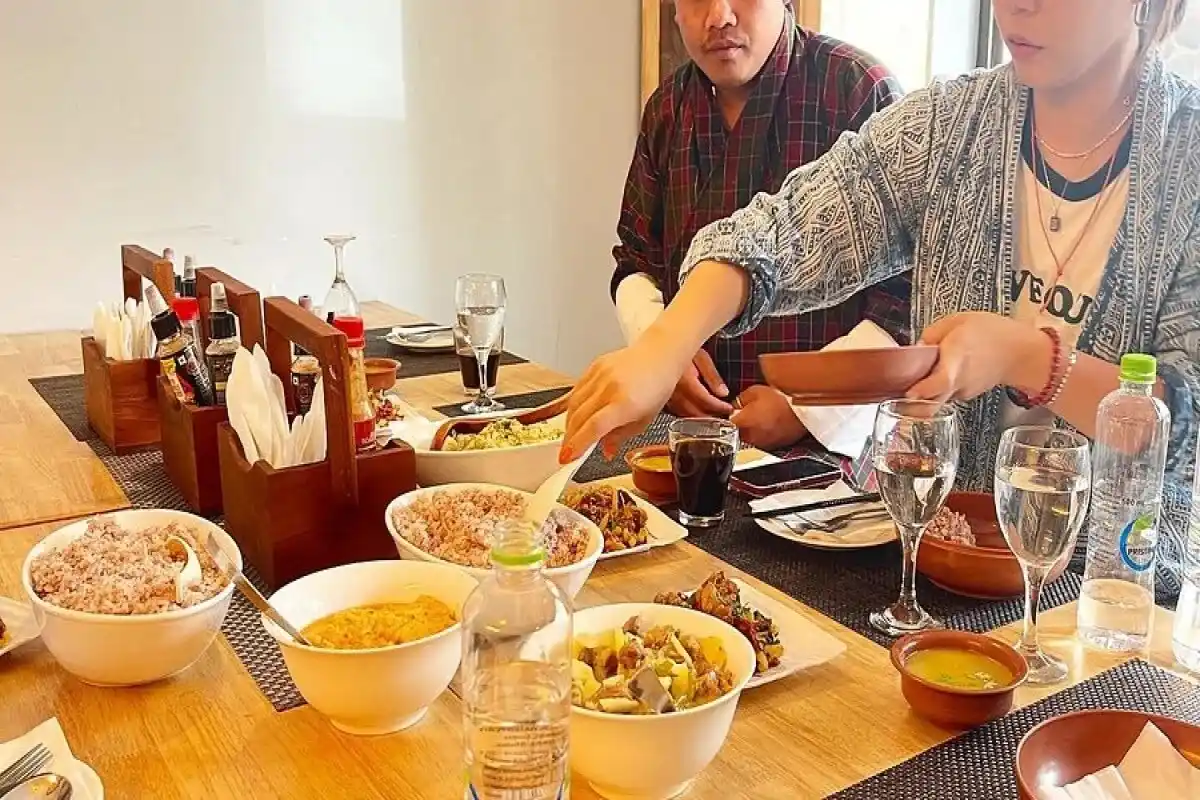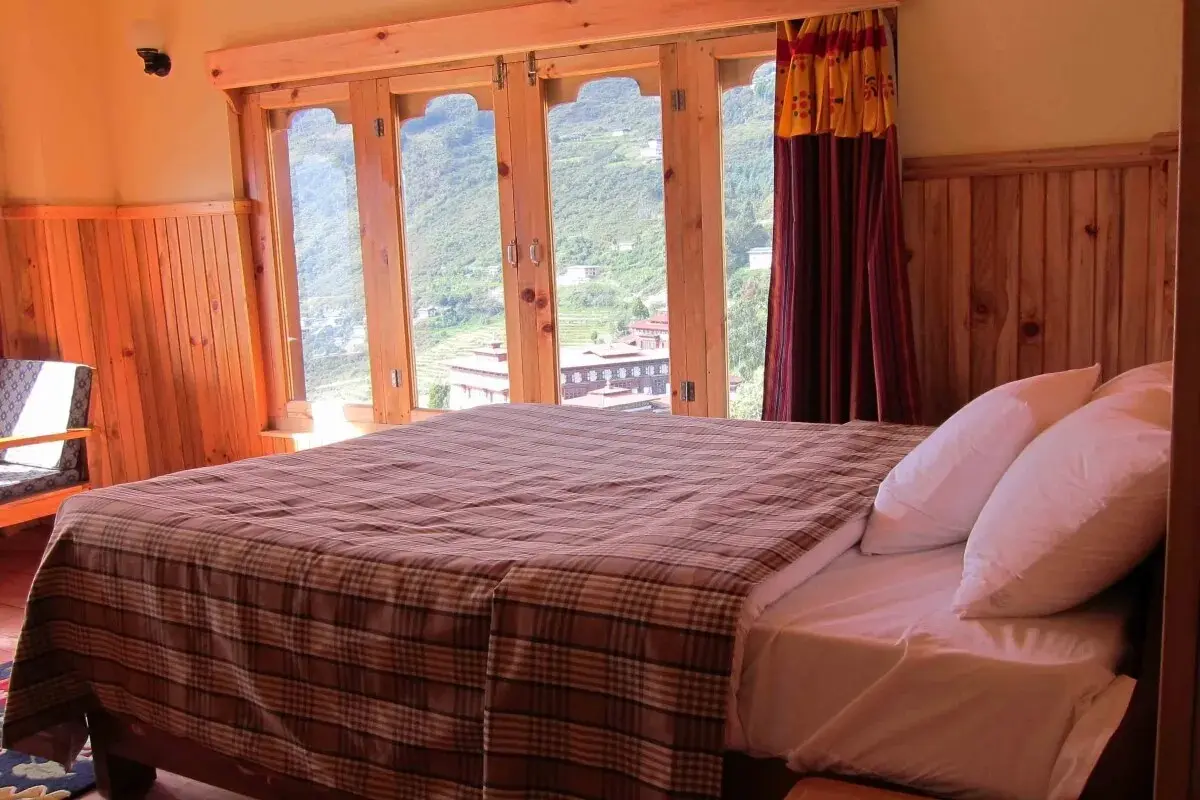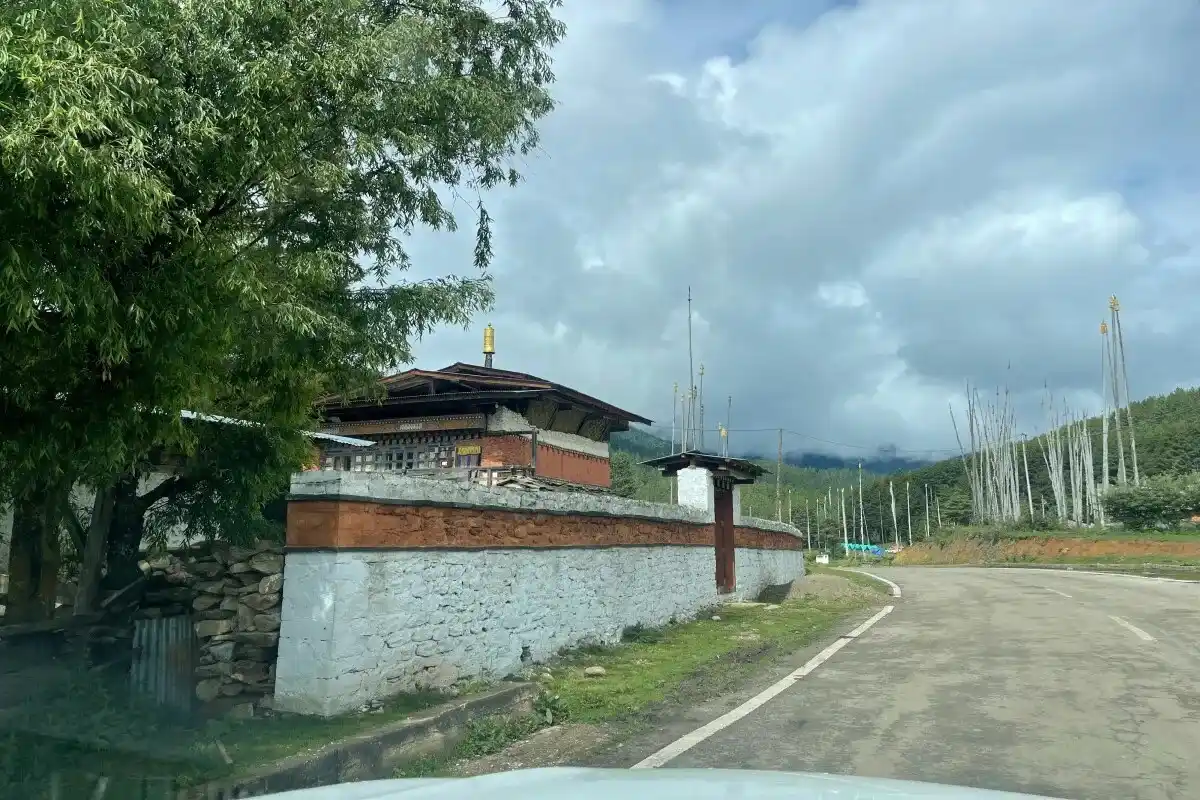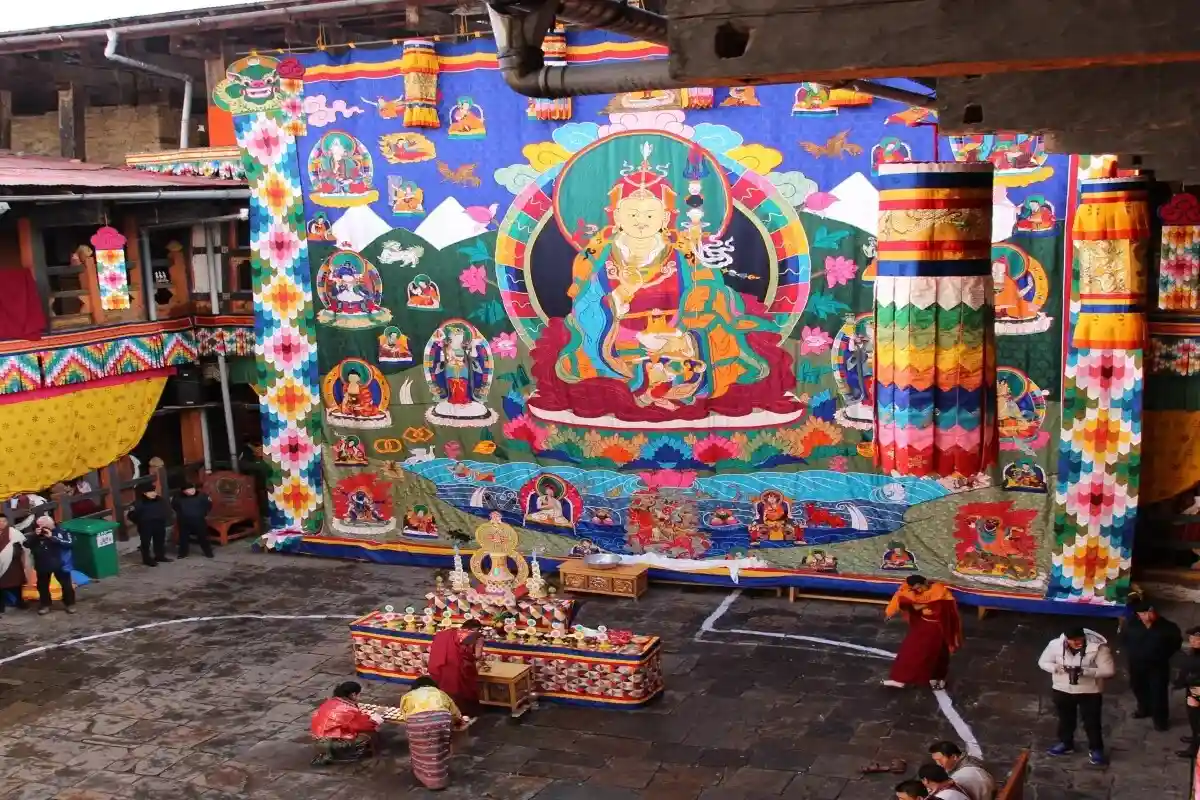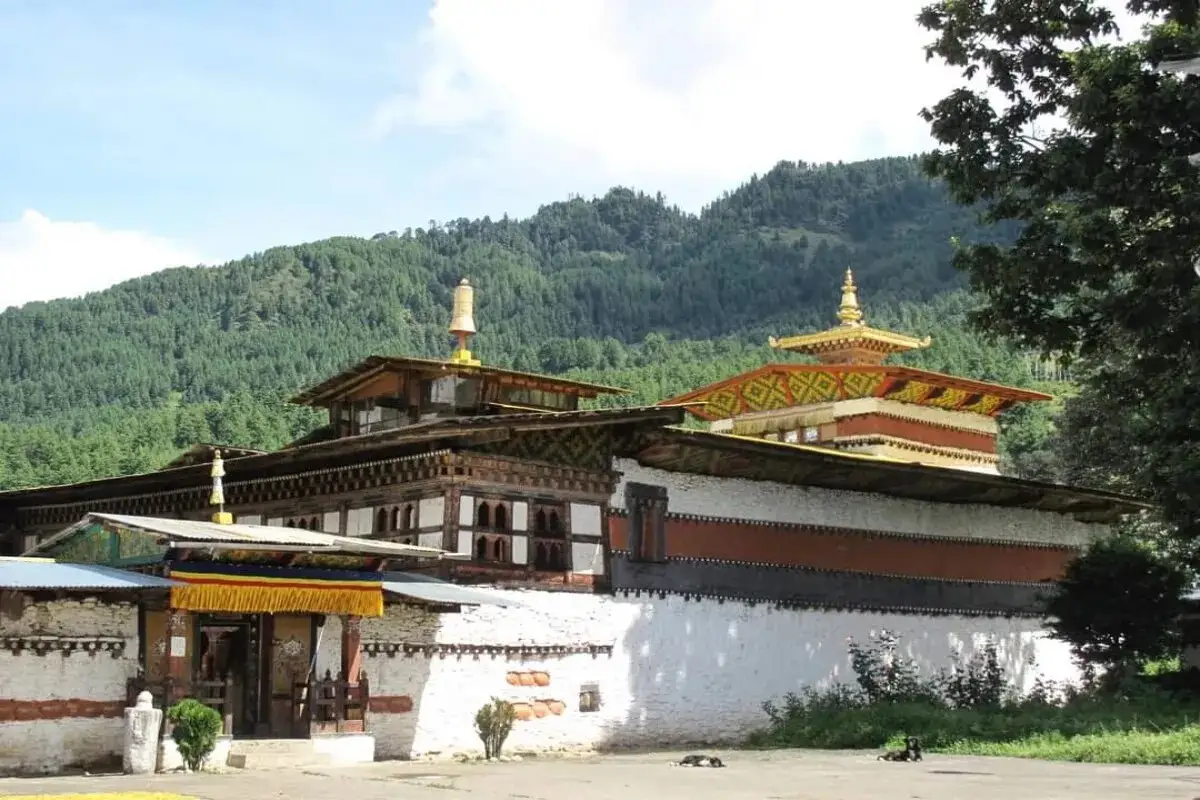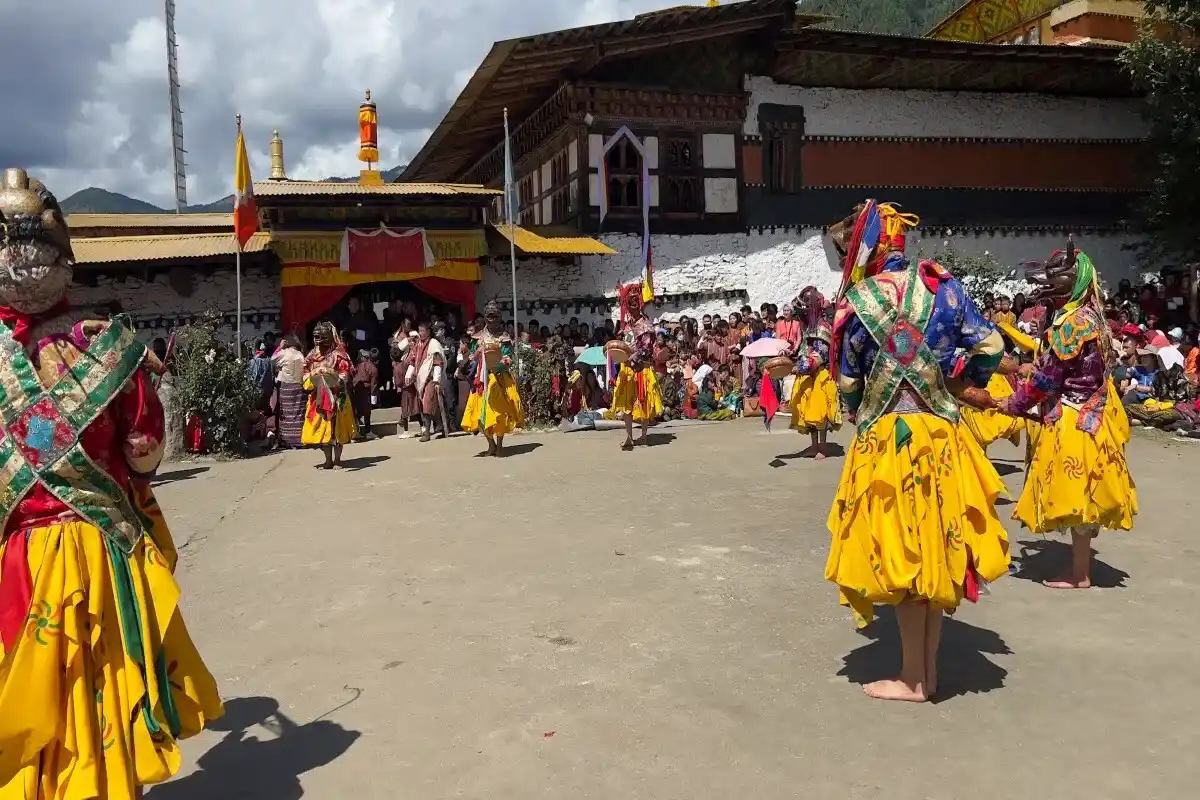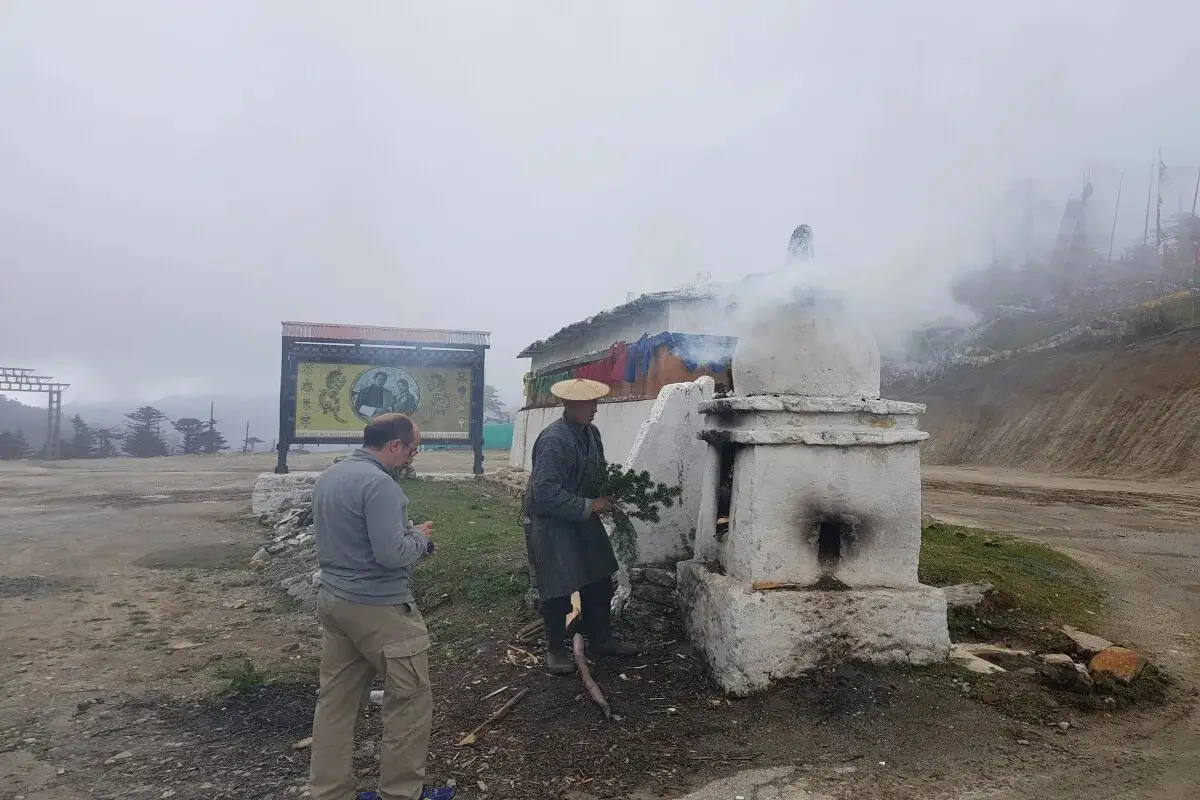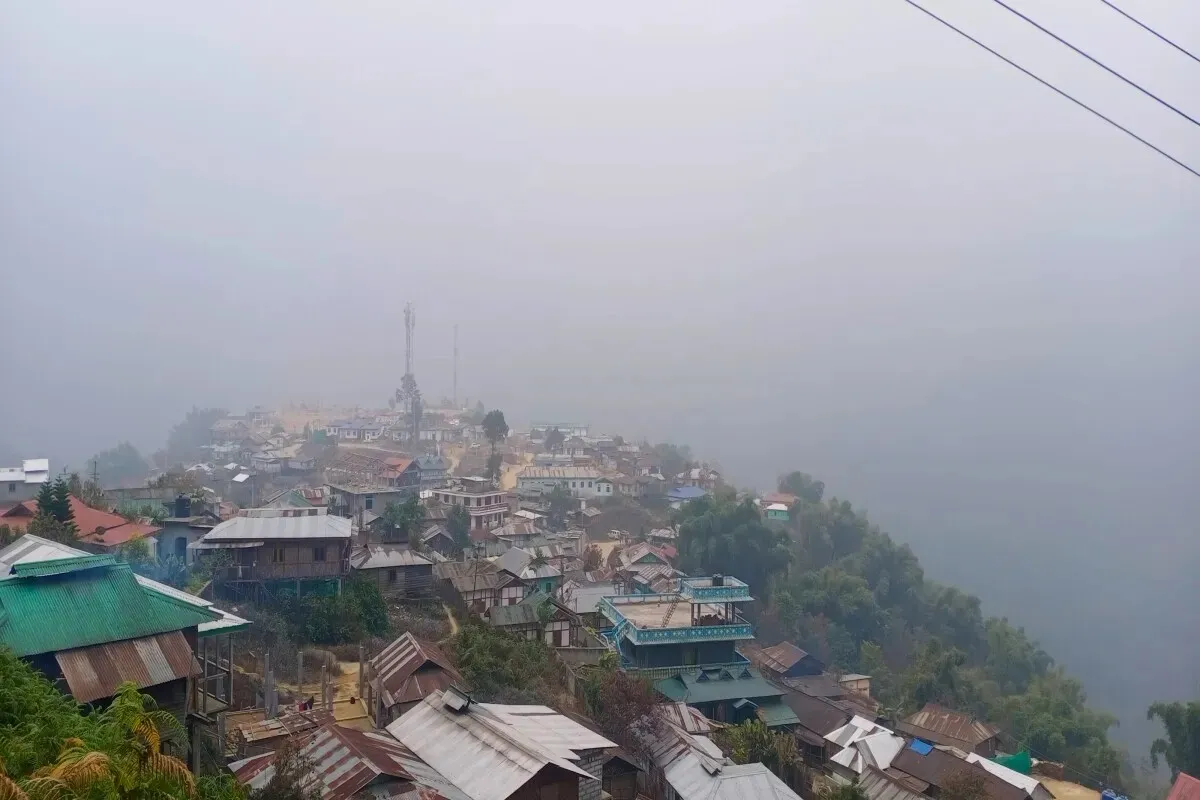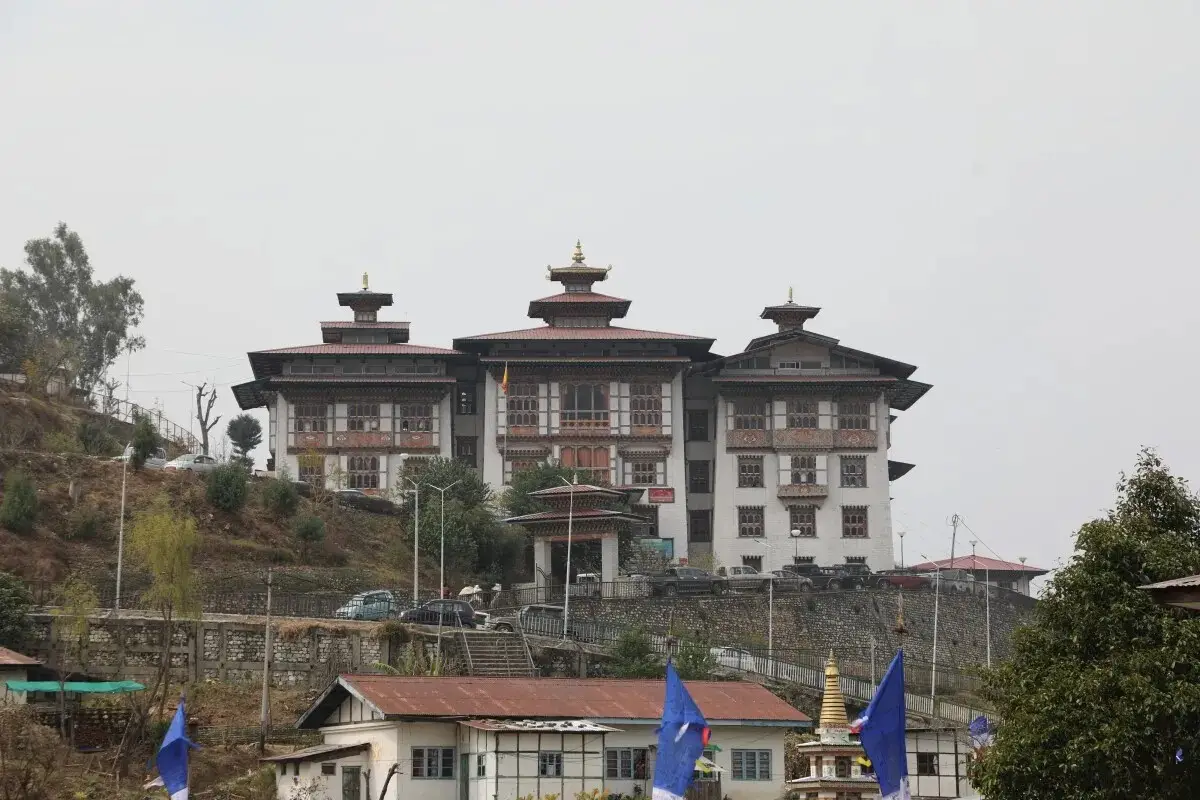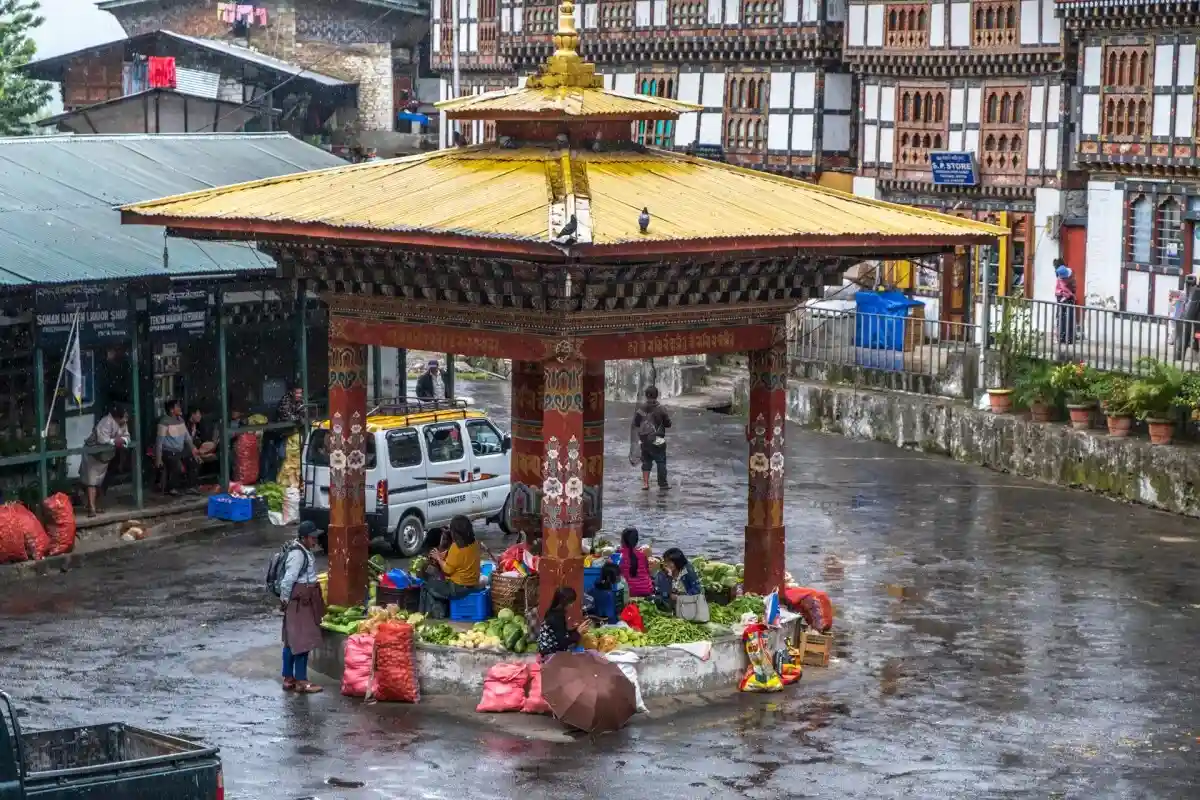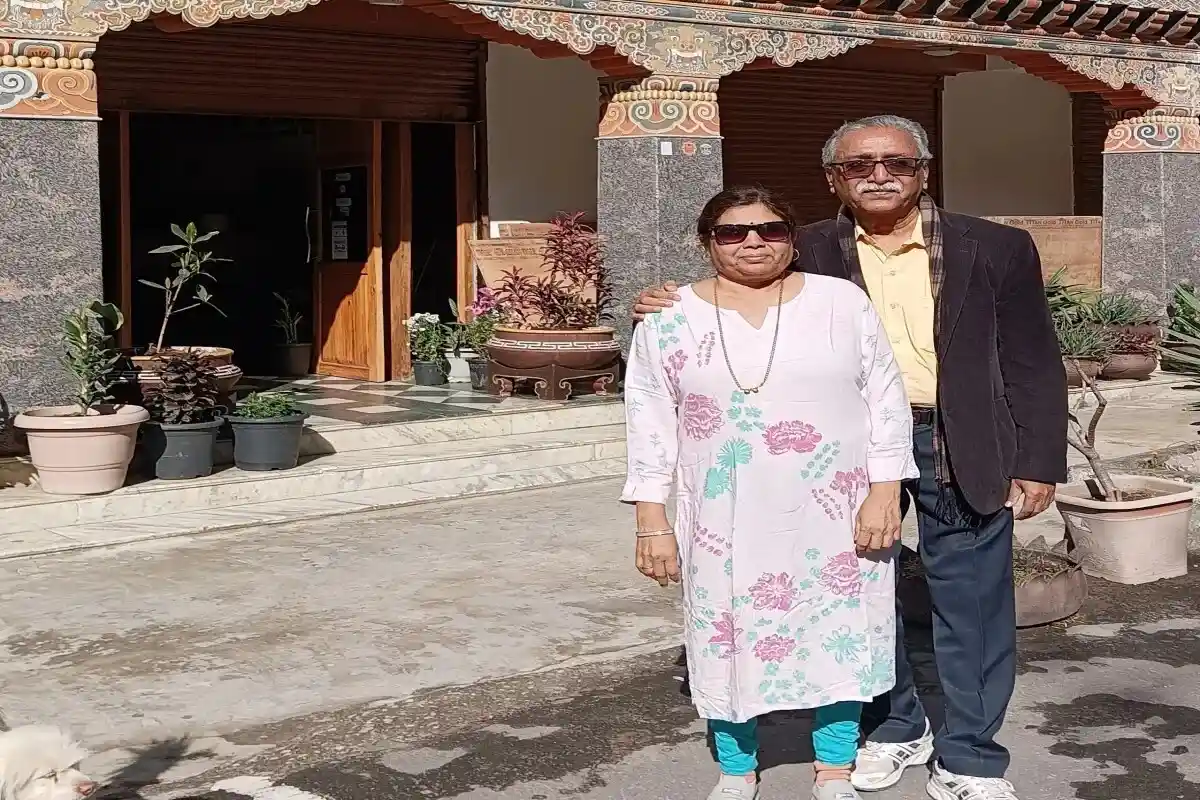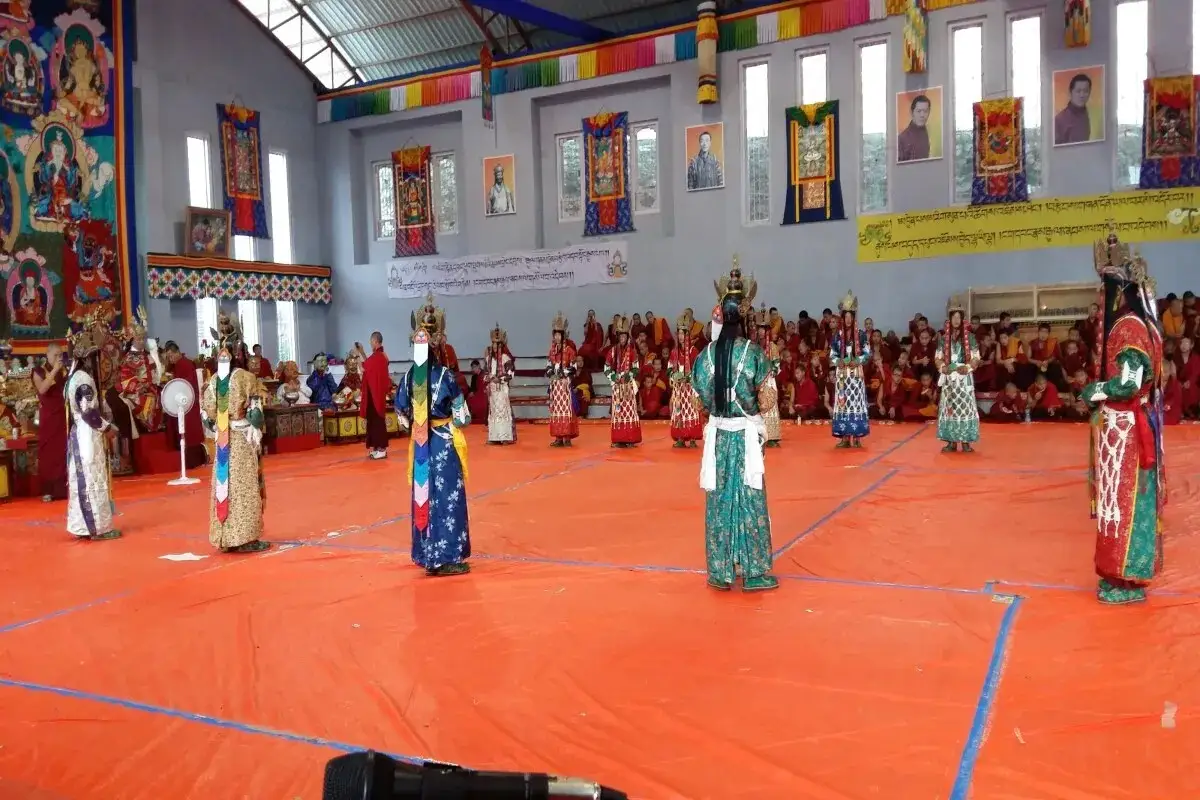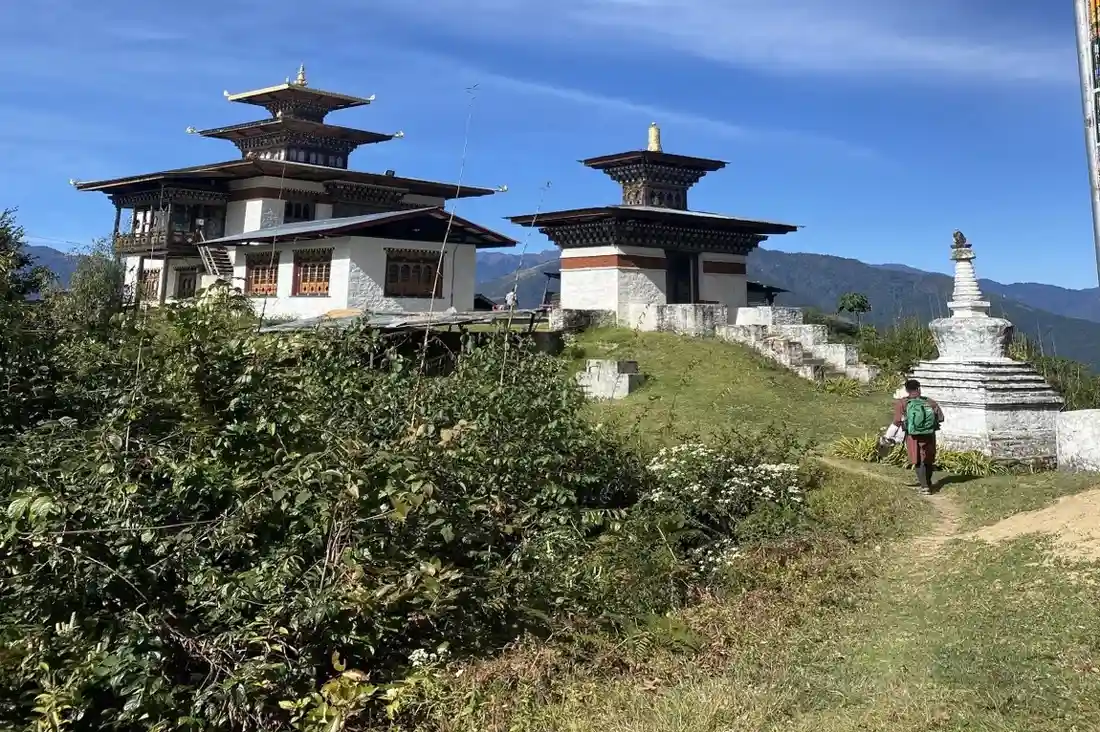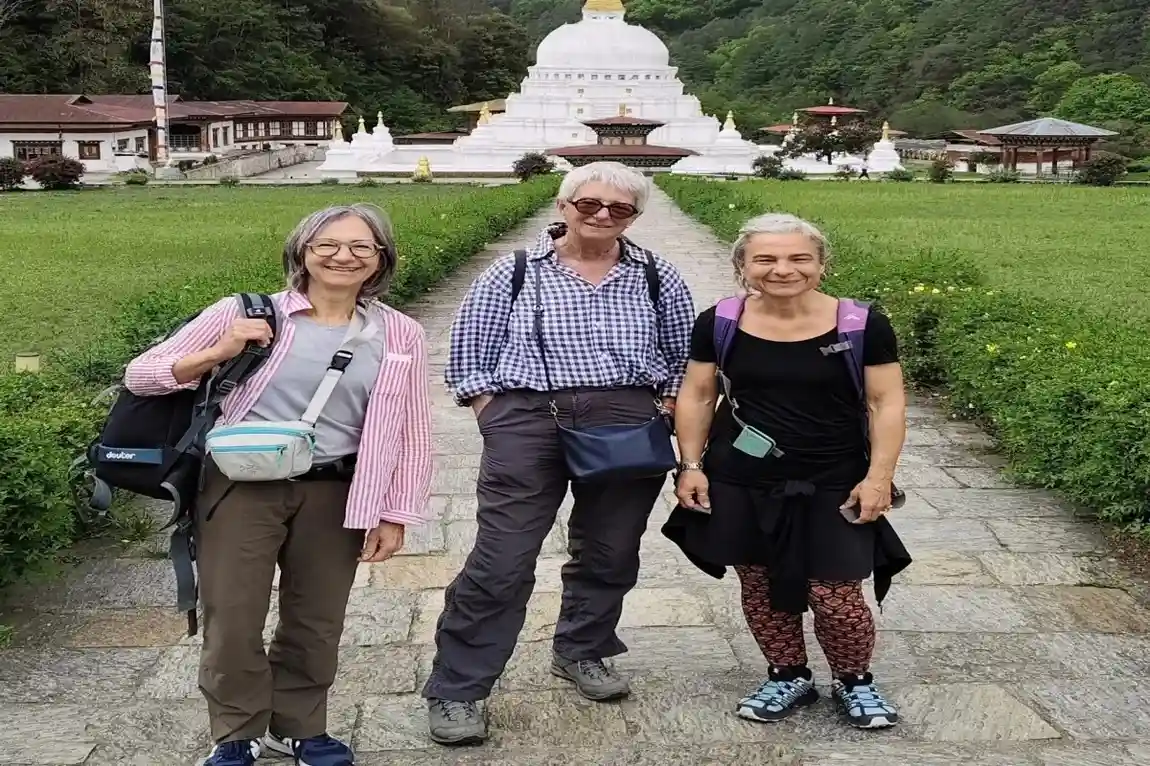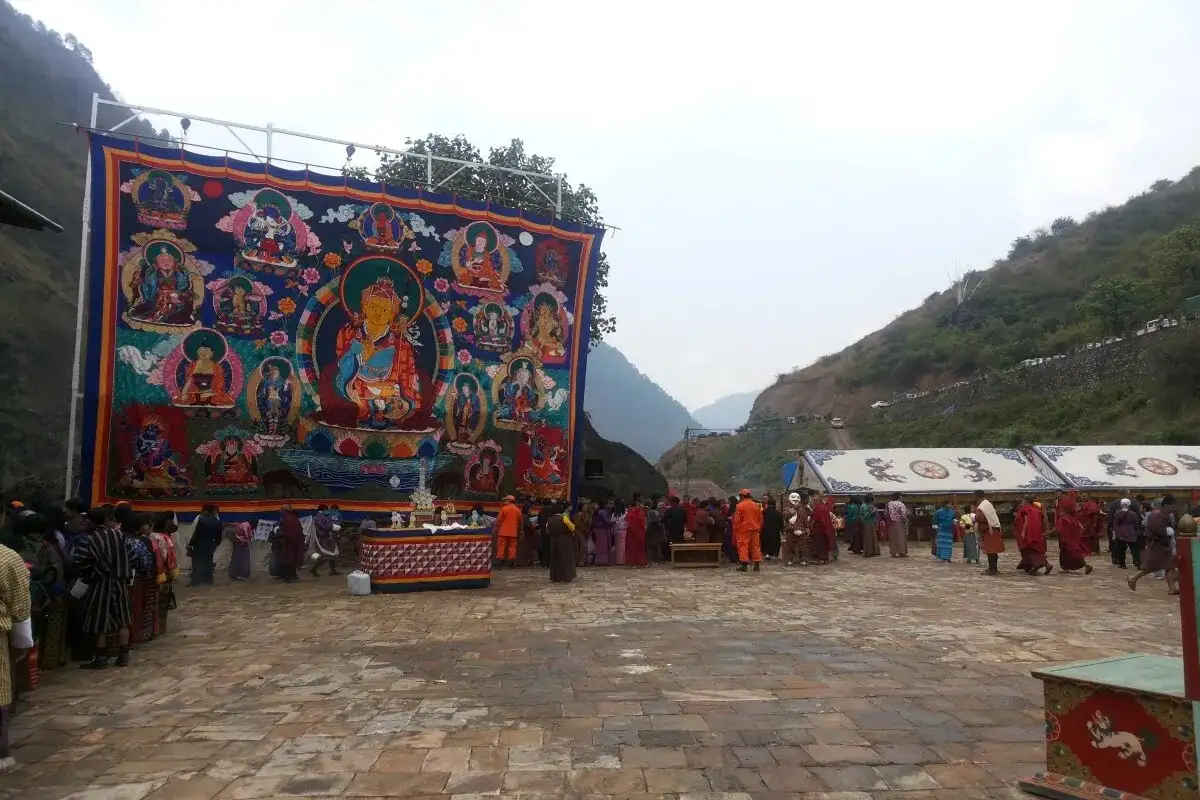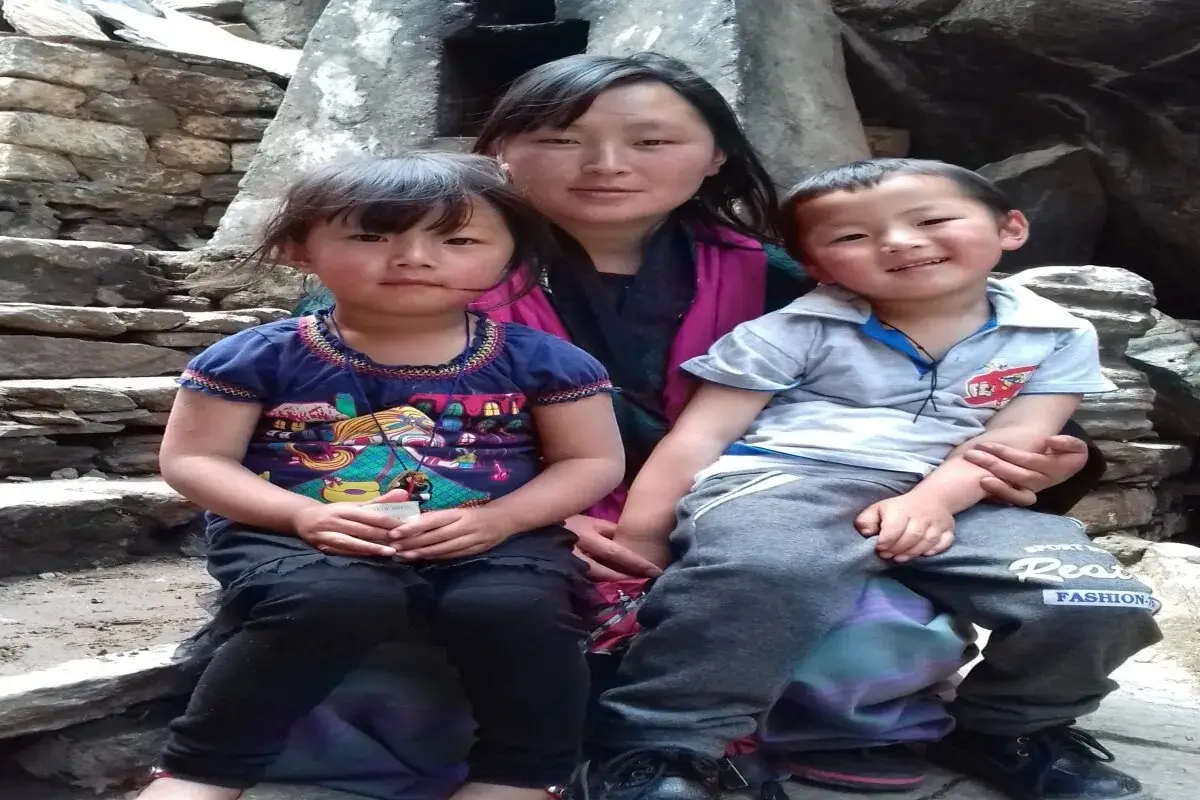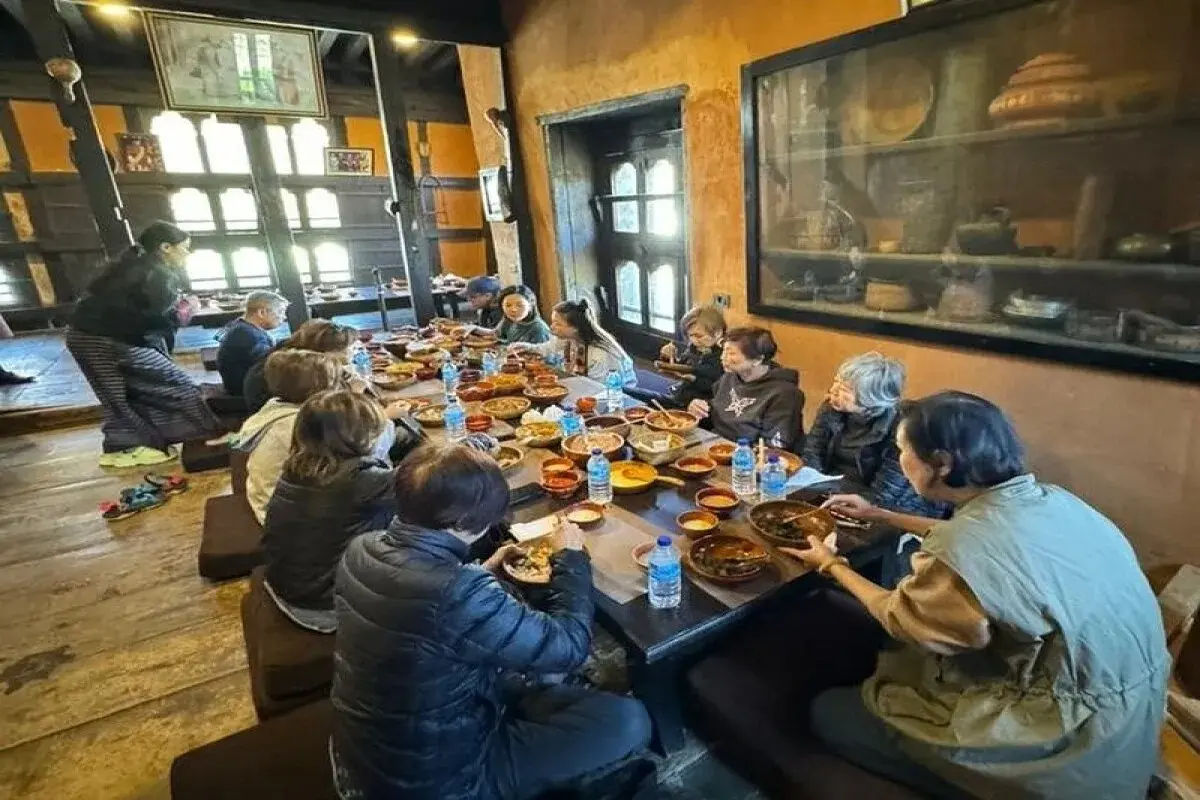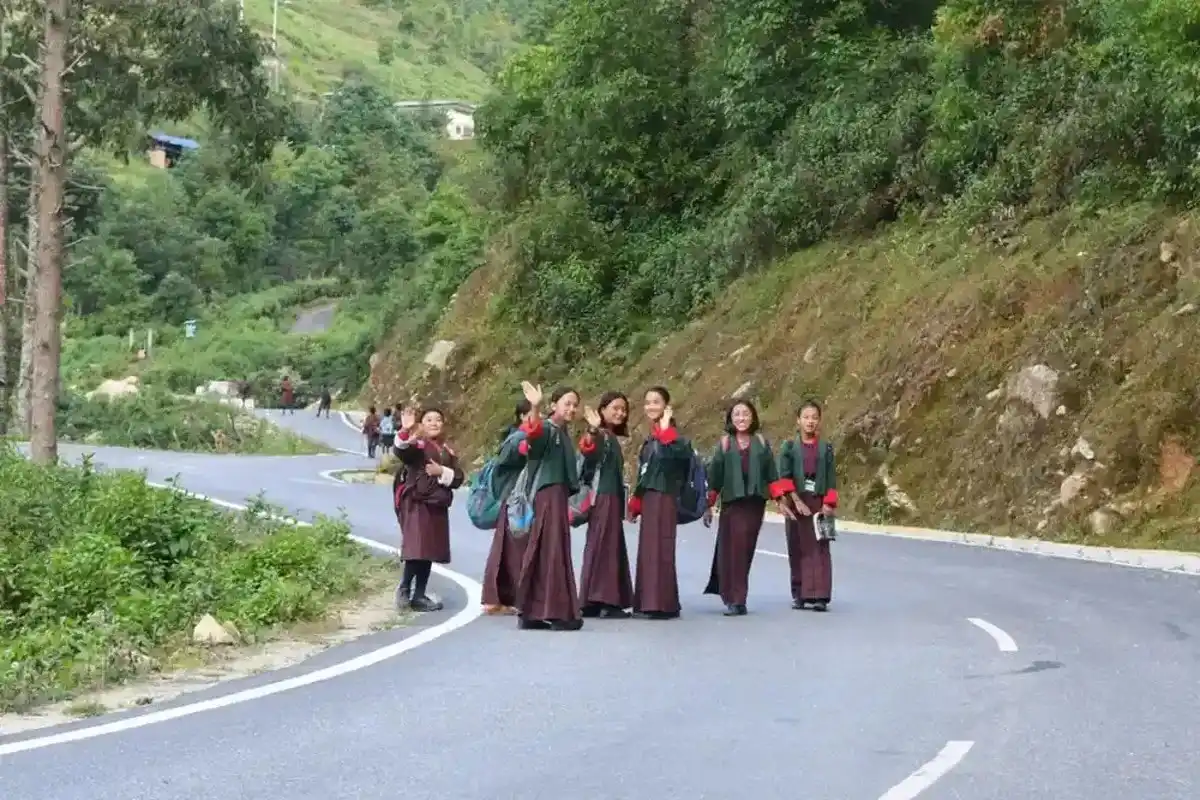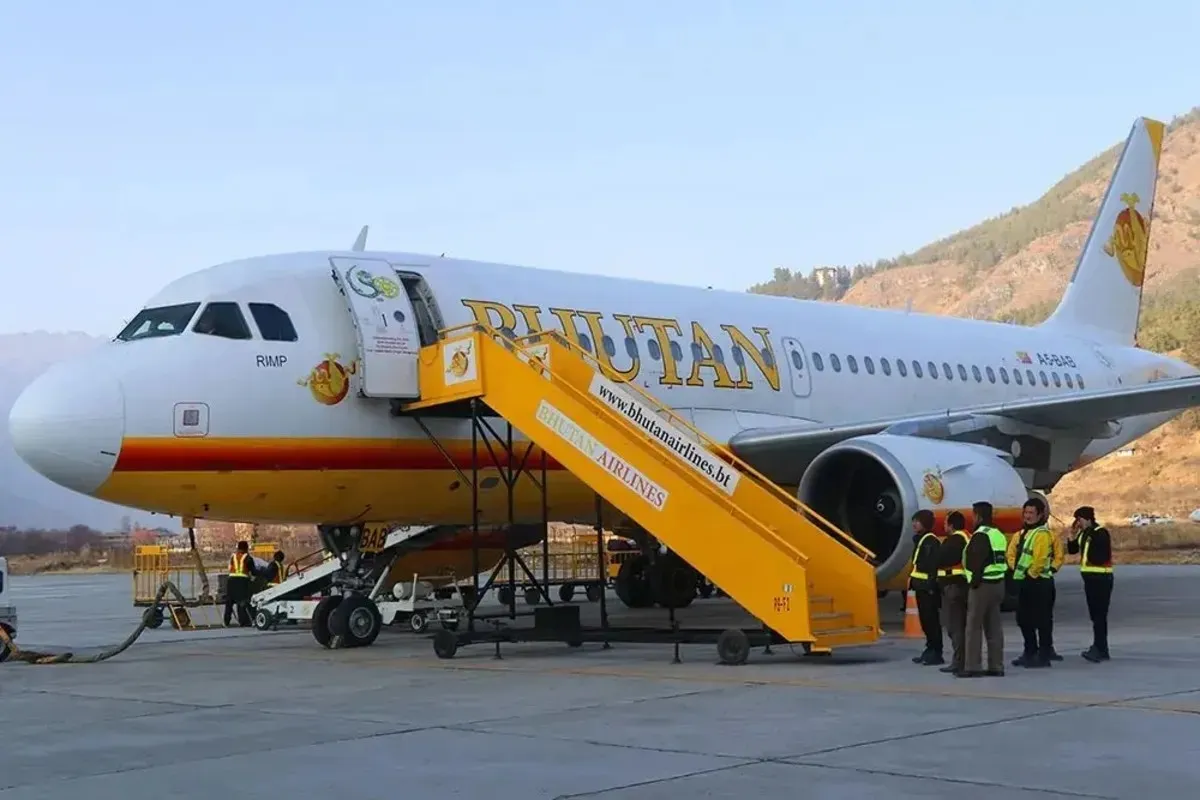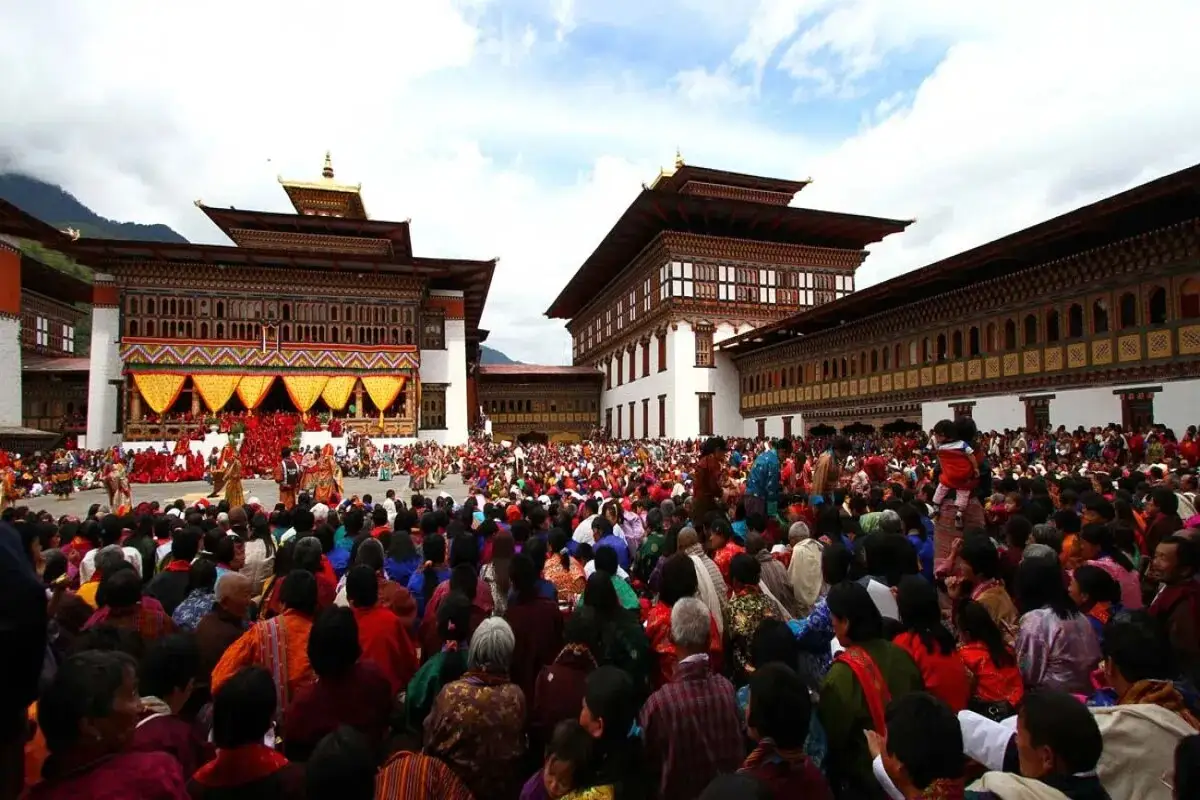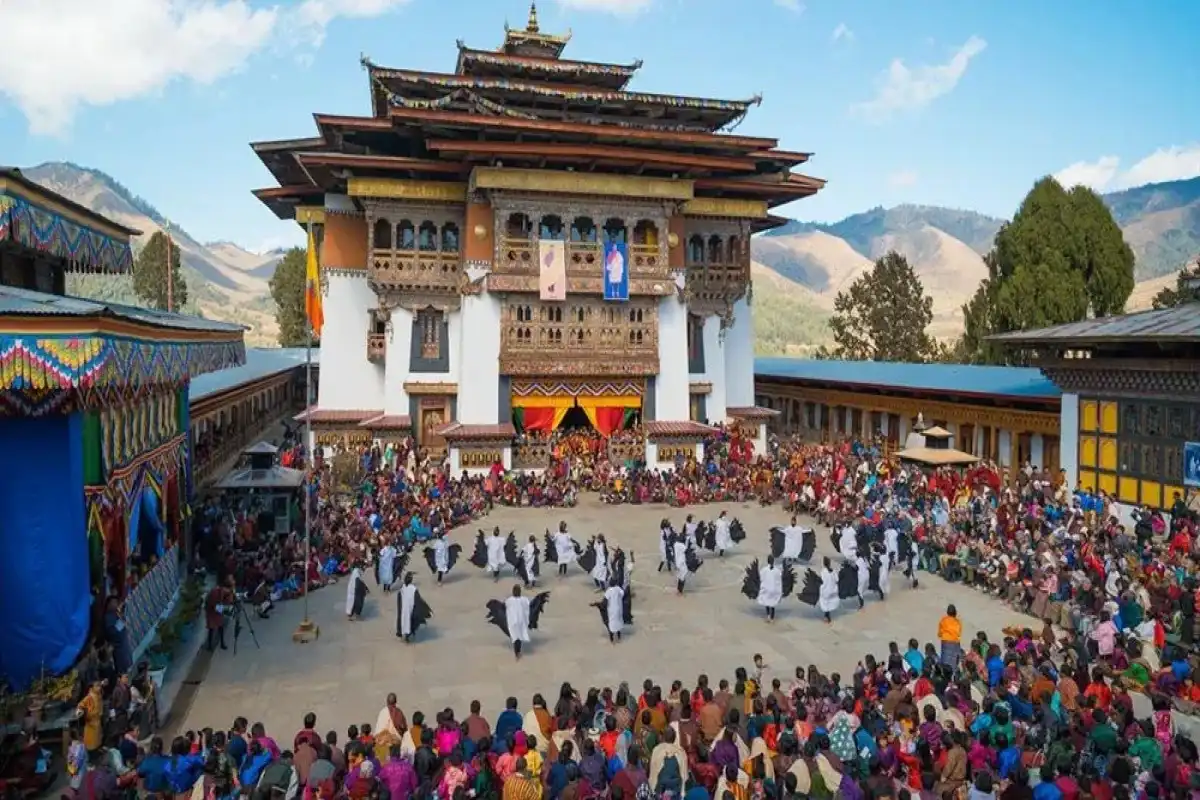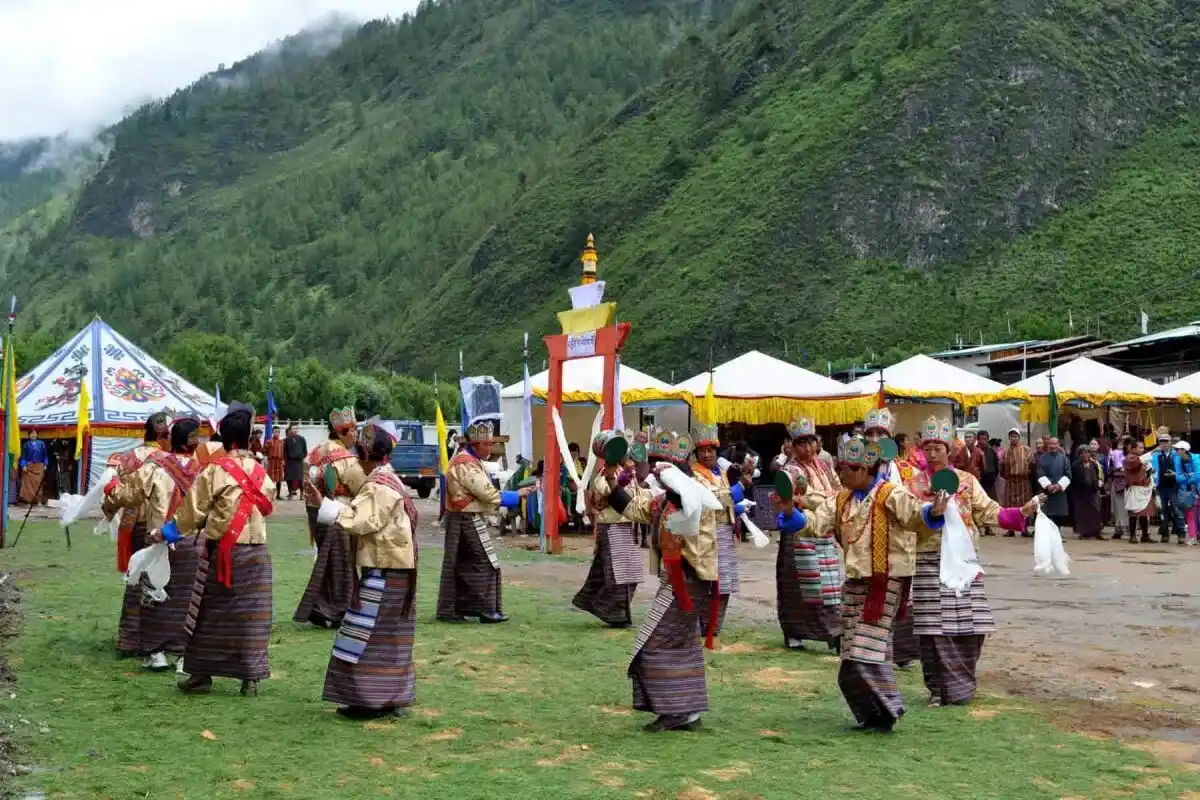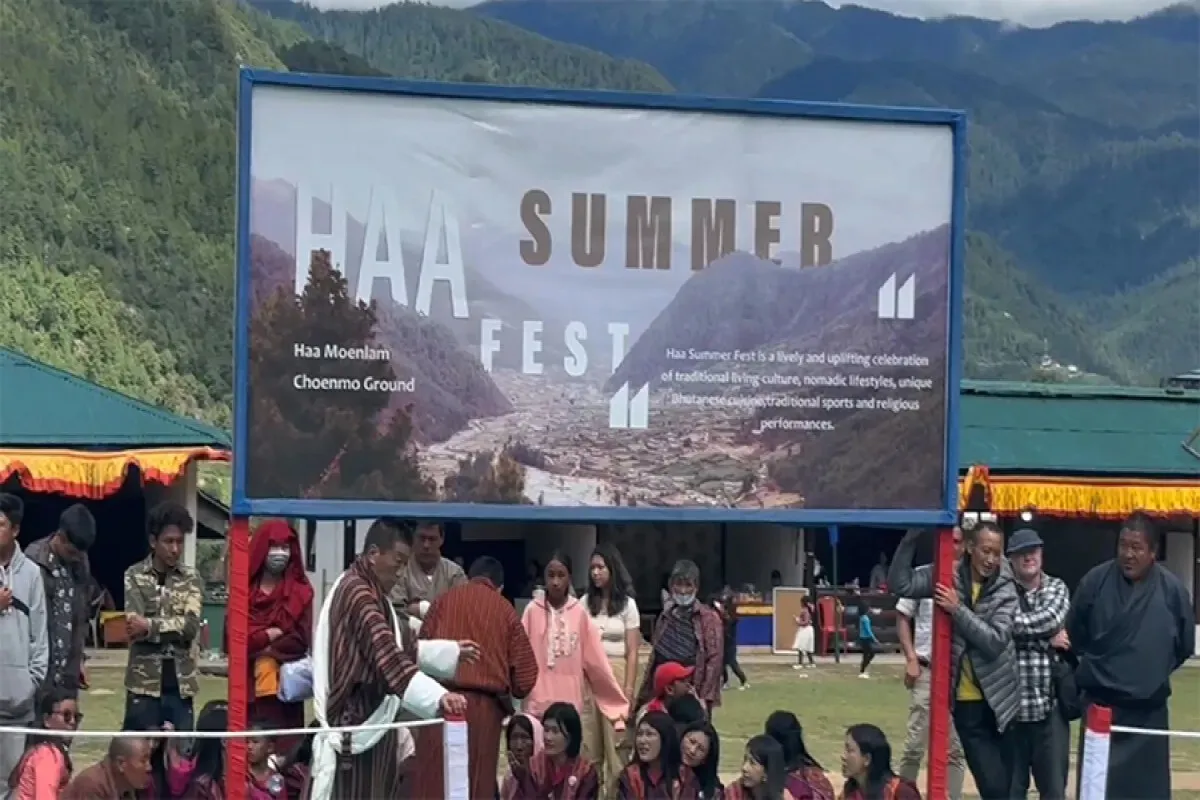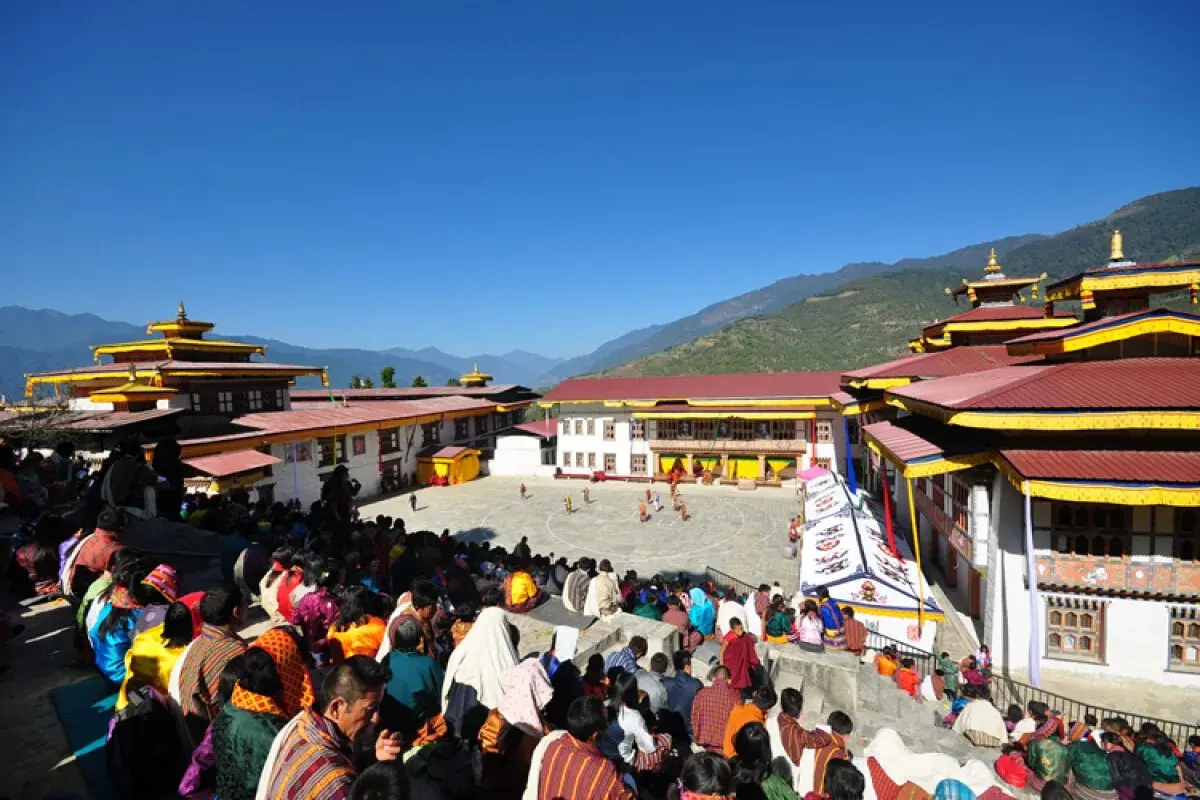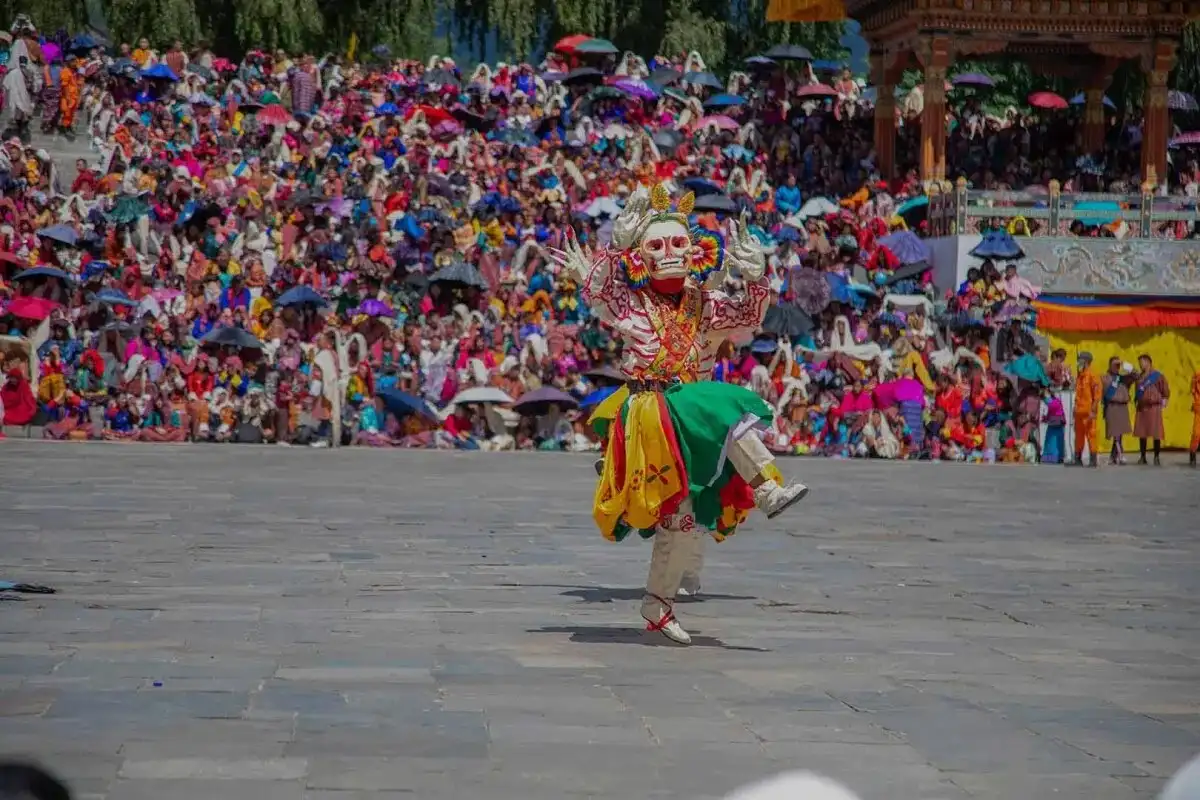Gomkora Tsechu Festival Tour - 13 Days
Gomkora Tsechu Festival Tour is a unique opportunity to become acquainted with the spiritual and cultural heart of Eastern Bhutan. At 13 days of rich activities, the itinerary combines festival engagement and visits to most of the captivating destinations of the kingdom. A highlight and climax of the trip is Gomkora at the centuries-old Gomkora Tsechu, where locals dress in colorful traditional outfits, see sacred mask dances, receive blessings, and their common heritage is celebrated.
Highlights
- Experience the Spiritual Heart of Bhutan
- Journey Through Eastern Bhutan’s Hidden Towns
- Tour Bhutan’s famed Landscapes
- Scenic Drives and Mountain Vistas
- Connect with Local Life
Trip Overview
A highlight and climax of the trip is Gomkora at the centuries-old Gomkora Tsechu, where locals dress in colorful traditional outfits, see sacred mask dances, receive blessings, and celebrate their common heritage is celebrated.covered under a single celebratory event, the Trashiyangtse will go on to further depict how Buddhism has been a significant part of Bhutan over countless years and, at the same time, strengthen the threefold bonds that have held villages and spoils together over the centuries.
With a standard tour route, you will go through numerous green valleys, explore all fortresses whose history dates back to ancient times, and cross exceptionally high mountain passes, all the while seeing the most iconic places of the kingdom, such as the Tiger Nest Monastery in Paro, Punakha Dzong, and the popular Chorten Kora. The travel route also offers a chance of cultural immersion, offers refreshing walks in the picturesque landscape, and allows a lot of time dedicated to thinking. Therefore, the festival forms a mandatory stopover for everyone who needs to have a deeper perception of the cultures rooted in the small country.
Highlights
You will get to experience the culture and traditions of Bhutan in this 13 days Gomkora Tsechu Festival.In addition, you will also get to explore different monastries.
Experience the Spiritual Heart of Bhutan
The Gomkora Tsechu Festival is a religiously inclined event attended by residents who come to witness religious masked dances performed as well as to receive blessings. Held in the serene Trashiyangtse valley, this centuries-long festival serves as a bright example of the Bhutanese culture, Buddhist piety, and communal harmony, and hence makes it one of those cultural experiences most pure regarding the kingdom.
Journey Through Eastern Bhutan’s Hidden Towns
A trip to eastern Bhutan, attributed as closed areas, i.e., Trashigang, Mongar, and Trashiyangtse, can venture into the heart of the passion of Rural Bhutan. The remote villages located in the middle of the kingdom offer a clear image of how the Bhutanese villagers live in their daily lives. The traditional way of life remains constant, and local hospitality is very real. It is possible to watch the village's daily life rhythms of the market folk, the crowd, and the changing panoramas, arousing a sense of contrast between the village and modern city amusements.
Discover Bhutan’s Iconic Landmarks
The architectural heritage of Bhutan is represented by three well-known dzongs, namely Paro Dzong, Tashichho Dzong, located in Thimphu, and Punakha Dzong, which reflect a succession of pages in the history of Bhutan. As beautiful monuments and practical centers of spiritual and cultural life of the country, these wonderful structures can offer their visitors to plunge into the atmosphere of Bhutanese uniqueness.
Scenic Drives and Mountain Vistas
Three major places of Bhutan that have exemplified the architectural heritage of Bhutan include Paro Dzong, Tashichho Dzong located in Thimphu, and the Punakha Dzong. All these dzongs form a chronological history of the development of the nation. As beautiful monuments and practical centers of spiritual and cultural life of the country, these wonderful structures can offer their visitors to plunge into the atmosphere of Bhutanese uniqueness.
Connect with Local Life
Lost among busy roads, Bhutan invites a series of village lanes and forested alleys on displaying the famous hospitality of the kingdom. You can chat with locals, observe tradition-rich craft making, and listen to the relaxed rhythm of country life. There can be no doubt that such unplanned meetings and lack of any detailed planning often make every trip an individual, untouched and unforgettable memory.
Best seasons for this trek
For solo travelers, the best time to visit Bhutan is spring (March–May) and autumn (September–November). The weather is great, the skies are blue, the land is green, sightseeing is easy, and real abundance of photography opportunities, which makes this place perfect for snapping pictures. In the spring, rhododendrons are in bloom, and fresh greenery is present, and autumn is cool and offers beautiful mountain views without interruptions. Monasteries are also full of colour during festivals during these months of your trip, and they add cultural context. Avoid the heavy monsoon season (June–August) when rural paths can be muddy, and winter (December–February) if you wish to avoid colder temperatures in the eastern highlands.
handcrafted item, which gives it a personal touch and makes the journey meaningful.
Spiritual and Emotional Benefits of a Gomkora Tsechu Festival Tour?
The spiritual and emotional awakening triggered by a Gomkora Tsechu Festival tour offers much more than observation of culture. Contained within holy rituals, recital of prayer, and lively dance, prayer chants often cause a great awareness of calm and inner insight in the form of a participant. The blessings, as well as the symbolism of the festival, are inspiring and profound. Deep in the serene setting of Trashiyangtse- far removed from the chaotic impetuses of global modernization, people can retreat and experience a completely unstructured taste of life that leaves the heart rejuvenated, spirit refreshed, and feeling fresh to get home with.
A highlight and climax of the trip is Gomkora at the centuries-old Gomkora Tsechu, where locals dress in colorful traditional outfits, see sacred mask dances, receive blessings, and celebrate their common heritage is celebrated.covered under a single celebratory event, the Trashiyangtse will go on to further depict how Buddhism has been a significant part of Bhutan over countless years and, at the same time, strengthen the threefold bonds that have held villages and spoils together over the centuries.
With a standard tour route, you will go through numerous green valleys, explore all fortresses whose history dates back to ancient times, and cross exceptionally high mountain passes, all the while seeing the most iconic places of the kingdom, such as the Tiger Nest Monastery in Paro, Punakha Dzong, and the popular Chorten Kora. The travel route also offers a chance of cultural immersion, offers refreshing walks in the picturesque landscape, and allows a lot of time dedicated to thinking. Therefore, the festival forms a mandatory stopover for everyone who needs to have a deeper perception of the cultures rooted in the small country.
Highlights
You will get to experience the culture and traditions of Bhutan in this 13 days Gomkora Tsechu Festival.In addition, you will also get to explore different monastries.
Experience the Spiritual Heart of Bhutan
The Gomkora Tsechu Festival is a religiously inclined event attended by residents who come to witness religious masked dances performed as well as to receive blessings. Held in the serene Trashiyangtse valley, this centuries-long festival serves as a bright example of the Bhutanese culture, Buddhist piety, and communal harmony, and hence makes it one of those cultural experiences most pure regarding the kingdom.
Journey Through Eastern Bhutan’s Hidden Towns
A trip to eastern Bhutan, attributed as closed areas, i.e., Trashigang, Mongar, and Trashiyangtse, can venture into the heart of the passion of Rural Bhutan. The remote villages located in the middle of the kingdom offer a clear image of how the Bhutanese villagers live in their daily lives. The traditional way of life remains constant, and local hospitality is very real. It is possible to watch the village's daily life rhythms of the market folk, the crowd, and the changing panoramas, arousing a sense of contrast between the village and modern city amusements.
Discover Bhutan’s Iconic Landmarks
The architectural heritage of Bhutan is represented by three well-known dzongs, namely Paro Dzong, Tashichho Dzong, located in Thimphu, and Punakha Dzong, which reflect a succession of pages in the history of Bhutan. As beautiful monuments and practical centers of spiritual and cultural life of the country, these wonderful structures can offer their visitors to plunge into the atmosphere of Bhutanese uniqueness.
Scenic Drives and Mountain Vistas
Three major places of Bhutan that have exemplified the architectural heritage of Bhutan include Paro Dzong, Tashichho Dzong located in Thimphu, and the Punakha Dzong. All these dzongs form a chronological history of the development of the nation. As beautiful monuments and practical centers of spiritual and cultural life of the country, these wonderful structures can offer their visitors to plunge into the atmosphere of Bhutanese uniqueness.
Connect with Local Life
Lost among busy roads, Bhutan invites a series of village lanes and forested alleys on displaying the famous hospitality of the kingdom. You can chat with locals, observe tradition-rich craft making, and listen to the relaxed rhythm of country life. There can be no doubt that such unplanned meetings and lack of any detailed planning often make every trip an individual, untouched and unforgettable memory.
Best seasons for this trek
For solo travelers, the best time to visit Bhutan is spring (March–May) and autumn (September–November). The weather is great, the skies are blue, the land is green, sightseeing is easy, and real abundance of photography opportunities, which makes this place perfect for snapping pictures. In the spring, rhododendrons are in bloom, and fresh greenery is present, and autumn is cool and offers beautiful mountain views without interruptions. Monasteries are also full of colour during festivals during these months of your trip, and they add cultural context. Avoid the heavy monsoon season (June–August) when rural paths can be muddy, and winter (December–February) if you wish to avoid colder temperatures in the eastern highlands.
handcrafted item, which gives it a personal touch and makes the journey meaningful.
Spiritual and Emotional Benefits of a Gomkora Tsechu Festival Tour?
The spiritual and emotional awakening triggered by a Gomkora Tsechu Festival tour offers much more than observation of culture. Contained within holy rituals, recital of prayer, and lively dance, prayer chants often cause a great awareness of calm and inner insight in the form of a participant. The blessings, as well as the symbolism of the festival, are inspiring and profound. Deep in the serene setting of Trashiyangtse- far removed from the chaotic impetuses of global modernization, people can retreat and experience a completely unstructured taste of life that leaves the heart rejuvenated, spirit refreshed, and feeling fresh to get home with.
Short Itinerary
Arrival in Paro, stroll in town, local markets, and enjoy Bhutanese cuisine.
Sightseeing at Paro Dzong, National Museum, and Kyichu Lhakhang, evening relaxation in Paro.
Hike to Tiger’s Nest Monastery with panoramic valley views,drive to Thimphu and evening stroll along Norzin Lam.
Explore Thimphu: Tashichho Dzong, National Memorial Chorten, Folk Heritage Museum,and local markets.
Drive to Punakha via Dochula Pass,visit Punakha Dzong and hike to Chimi Lhakhang.
Drive to Trongsa, visit Trongsa Dzong and Trongsa Museum,enjoy panoramic mountain views.
Drive to Bumthang,visit Jakar Dzong, Jambay Lhakhang, Kurjey Lhakhang, and Chamkhar town.
Bumthang sightseeing: Tamshing Lhakhang, local farm, market, and village exploration.
Drive to Mongar via Thrumshing La Pass, visit Mongar Dzong and explore town.
Drive to Trashigang, visit Trashigang Dzong and local market; evening stroll.
Drive to Trashiyangtse, visit Chorten Kora and local woodcarving/craft workshops.
Attend Gomkora Tsechu Festival, experience traditional dances, rituals, and spiritual events.
Fly from Bumthang to Paro, last-minute shopping and departure from Bhutan.
Gomkora Tsechu Festival Tour Itinerary
When arriving at the Paro International Airport, you will be welcomed by our company representatives who will offer you a polite welcome, and thereafter, you will check in at the hotel of your choice. Even a short, relaxing stroll in the quaint historic town of Paro will give you time to orient yourself to the local altitude, and nowhere is so peaceful as the mountain air. Here you will find several humble handicraft shops and local markets, giving you a first taste of what Bhutan has to offer in the way of food. The valley unveils itself with green fields of rice and welcoming households, which makes the voyage in the evening calm and delightful. Towards the end of the day, you will have your introductory lunch of Bhutanese cuisine, which can consist of red rice, ema datshi, and freshly blended vegetables, among others. Your stay in the country will be well-rested and ready to face the cultural and scenic aspects ahead as you spend the days in the country.
You will start the day with an exploration of Paro Dzong, the most famous fortress that is characterized by carefully made timber construction and striking views of the valley. Subsequently, we visit the National Museum located in a former watch tower, where one would find centuries of Bhutanese history, art, and artefacts on display graciously. In the afternoon, visit Kyichu Lhakhang, which is one of the oldest temples of Bhutan-built in the 7th century. The temple is surrounded by rotating prayer wheels and colorful prayer flags, which provide an atmosphere of calmness and spirituality. The rest of the afternoon can be spent in a relaxing walk in the narrowest streets of Paro or a relaxing moment at your hotel.
Begin with an untimely affair with the Taktsang Monastery, or better known as the Tiger Nest. Nestled dangerously between some cliff faces, this monastery is one of the most treasured monuments of Bhutan, and the person who scales up the height is richly rewarded with marvelous panoramas after slowly going up. Walk and go to its sanctified stairs, where butter lamps will be wavering to give it a meditative environment. Pick up your tracks back to the lower ground, savoring extensive views of the valley the whole way. After a lunch in Paro, follow the scenic piece of road spiraling its way to Thimphu, the national capital of Bhutan. Arrival in the city allows the visitors to go out for an evening stroll along the main avenue, the Norzin Lameline, which is famed for having many local retail stores, cozy coffee shops, and architectural elements that remind one of the cultural background of the Bhutanese people. The pilgrimage, therefore, puts together intense activity, divine experience, and the relaxed pace that is Bhutanese urbanity.
You will have a day enjoying Thimphu, the beautiful capital of Bhutan. Start with the impressive Tashichho Dzong, a powerful structure together with other major governmental blocks, buildings. Now you will visit the National Memorial Chorten, a religious shrine in which pilgrims spin prayer wheels. The Folk Heritage Museum provides an understanding of the folklife of the Bhutanese, whereas the National Institute of Zorig Chusum exhibits the 13 arts and crafts that are traditional to the kingdom. After lunch, you can head to the afternoon visit to the imposing Buddha Dordenma Statue, which overlooks the valley and has peaceful panoramic views. In the evening, you can stroll down the Norzin Lam Street, where people will find handicraft items, eateries of locals, and textiles displaying the culture of Bhutan. Relax in Thimphu, which is full of the calm yet exciting nature of the capital.
After breakfast, drive out of the Thimphu valley on a one-day panoramic tour to Punakha. Winding your way up, past Dochula Pass, 3,100 metres, a pass that features 108 memorial chortens as well as great views of the Central Himalayas on fine weather days. Beyond the pass, you will stop at a noted photo permit point entering the Punakha valley, which is warmer. Upon arrival, pay an initial visit to Punakha Dzong (the Palace of Great Happiness), an architectural gem situated between two rivers and regarded as one of Bhutan’s most scenic and historically significant landmarks. After lunch, embark on a short hike on vast rice fields and swing suspension bridges to reach the fertility temple of Chimi Lhakhang that belongs to the Drukpa lineage known as the “Mad Monk.” The day blends mountains, such monuments, and the serene loveliness of the valley.
The sixth day starts with a beautiful scenic drive to Thimphu. Winding across steep paths and green valleys, the travel gives constant vistas of continuous green land and highly terraced green mountain slopes, and widespread settlements. You can have breaks to stretch and take in the fantastic views. You will observe Trongsa town in the afternoon, which is known for its ancient echoes. The Trongsa Dzong is the largest fortress and the major tourist attraction in the country, and is located in Bhutan. Visitors can visit its large courtyards, well-kept watchtowers, and several temples, which altogether cast light on the development of the royal family as well as the way things were run in the royal governance. Moreover, there is the Trongsa Museum within the ancient watchtower that gives the visitor a detailed history about the kingdom, its monarch, and cultural heritage. A night stay in Trongsa can be an excellent experience of offering a panoramic view of the mountains.
Take an early drive to Trongsa and, seeing its mighty fortress on the way, start to Bumthang, which is also called the spiritual heartland of Bhutan. The path will meander through the calm valleys, the lush scenery of pine woods, as well as the harmless slopes, and make the experience a relaxing retreat. When you arrive in Jakar, you can visit the Jakar Dzong or the Castle of the White Bird dominating the local landscape. Then you will see Jambay Lhakhang, established in the 7th century by King Songtsen Gampo, and Kurjey Lhakhang, which is known to have the sacred footprint of Guru Rinpoche. Step off the road to Chamkhar town, talk to the local merchants and spend some time in the real rural atmosphere. Located in Bumthang, the area is considered by most people to be an extremely picturesque place in Bhutan because it is a centre of religious importance and natural beauty.
On the first day of the tour, you'll enjoy Bumthang, which is known as the spiritual center of Bhutan. Start with Tamshing Lhakhang, which is a sacred monastery in honor of the great saint Pema Lingpa. In this case, sacred artefacts and ancient murals explain the religious culture of the Bhutanese citizens. On to the Farm, a small enterprise which is renowned for its cheese, honey, and Apple brandy, gives the valley its characteristic flavour in its way of life. In the local market, you can find a chance to meet local people and see handmade textiles and natural fruit and vegetables, and crafts. Enjoy the afternoon amongst the fields and tiny villages where you can find prayer flags and temples. It is the place to rest and reflect in peace without interruption, with the quiet spiritual environs and rustic setting in the rural pace of Bumthang.
On the travel day today, the travellers are guided to a scenic route of Bhutan; the route between Bumthang to Mongar. The trek goes through Thrumshing La Pass, 3750 m, with panoramic views of the Himalaya, precarious valleys and stark forests which leave a captivating mark. Some waterfalls fall, followed by windswept roads that portray the rugged terrain of Bhutan. A visit to Mongar, when one arrives in this small town, which is one of the main entrances in Eastern Bhutan, Mongar Dzong, which was constructed traditionally in the twentieth century, shows a perfect example that the country has maintained its architecture and culture. Evening walk through the town gives a chance to interrelate with the friendly people living there and also to enjoy the no-frills style typical of Eastern Bhutan.
Start early after breakfast on a picturesque drive to Trashigang (Mongar-Trashigang), then through lush forests and steep mountain roads and serene villages. The route gives spectacular vistas of terraces, the local houses and everyday life in rural Bhutan. As the cultural and economic central point of the eastern region of Bhutan, Trashigang or The Jewel of the East, is due to its proximity to the villages that surround the region. On arrival, one normally proceeds to the Trashigang Dzong, which is located on a Ridge with a view of the Gamri River, and it is a historical landmark. Things have changed over many centuries, and it is in this place that serves as an administrative and spiritual center of this area. Then go to the town market, which is very busy as the town's citizens go there to trade things. Stay overnight in Trashigang, the people and the sublimity of the Bhutanese eastern highlands.
The setting of Trashigang and Trashiyangtse is a quiet valley filled with a deep cultural background, with a history of spiritual essence of the past. The drive through the region is done to see quaint hamlets, lush valleys, forested and vista points that give tremendous views of the country, giving travelers a chance to admire Bhutan also has topography and landscape that have not been mainly exposed to modernization. Soon after arrival, you can make a tour of Chorten Kora, a massive stupa modeled after the globally renowned Boudhanath of Nepal and long considered one of the main shrines of the annual pilgrimage. Later, there was also a traditional woodcarving workshop and craft tour, which is a building where locals create bowls and other typical items. Genteel hospitality, the same throughout all time, dwells in the valley that is still very traditional. Stay over in Trashiyangtse and have the best of the Gomkora Tsechu Festival the next day.
On the 12th day, you will spend time focusing on the special Gomkora Tsechu Festival, one of the most sacred festivals in eastern Bhutan. Citizens dressed in the shining national colours come to watch ritual dances, to receive holy blessings and to confirm spiritual faith. At the sacred precincts, there are chants, traditional music, and the cool scent of incense, all of which work in synchronism to produce an environment of fiery devotion coupled with joyful reverence. During the procedures, ancient traditions are followed, and every set of actions is full of symbols and semantics. Conversations with local participants impart further cultural resonance. The Tsechu festival gives everyone a spiritual awakening of sorts, and therefore becomes the crowning moment of your trip to Bhutan.
As your trip comes to an end, you will fly using domestic airplanes with a last prospect of celebrating the valleys and high snow-capped mountains of the country at the flight level when you travel from Bumthang to Paro. One can pray to God to make a trip to Paro, a sophisticated town in Bhutan, which has local people who sell Bhutanese handicrafts and textile products as well as a variety of souvenirs. The peaceful, magical lands of this area, with their ancient dzongs, picturesque valleys, and the holy Gomkora Tsechu festival, are an experience that can be said to exemplify a larger portion of culture, spiritual values, and the immense beauty of nature. One leaves Bhutan, Land of the Thunder Dragon, with a happy heart and a new spirit, and leaves behind another jewel in the world.
Know Before You Travel
-
Activities to be done during the trip:
October is also the time when travelers can indulge in a prudent cultural, spiritual, and outdoor activities, making it a solitary or distinct exploration. The historic dzongs, monasteries, and colorful markets represent the heritage of the country, whereas the contemplative practices, including visits to the temples and short meditation sessions, are the aspect that will complement the program. Photographers will find an infinity of opportunities to shoot festivals, panoramas with mountains, and even simple moments. Easy strolls on village trails and natural walkways provide one with an intimate knowledge of local culture. You can engage with the residents through a tea-sharing or a handcrafted item, which gives it a personal touch and makes the journey meaningful.
FAQs for Gomkora Tsechu Festival Tour
Hotels and guesthouses tend to provide wireless connection in most of the urban destinations, but wireless gets less and less in villages in rural areas and hillsides. This kind of disparity gives the guests a chance to wrench themselves off their smartphones, seek shelter in nature, and practice mindfulness about their immediate context.
Haa Winter Festival, properly, is perfect to entertain people of all age groups. The event promises an entirely family entertainment experience characterized by colorful dances, fun music and a very festive feel. Average low temperatures and relatively moderate walking distances should be expected by the visitors.
Yes, you can create a bunch of memories of the event, also take permission before capturing monks and individuals in your reel.
No, beginners can join easily and get the best memories during this tour, and it also helps to gain various spiritual information.
You need a visa and all necessary permits for your trip. These documents can not be received on the day of your arrival, so they must be processed before coming here. After you book a trip with us, we will manage these papers for you. Your Bhutan visa is arranged by Orrog as part of the package.
The main way to come to Bhutan is through Paro International Airport, which is well-connected to cities like Bangkok, Delhi, Kathmandu, and Singapore. Most people arrive by air, but if you plan to come via road, you can enter through Phuentsholing, located on the southern border with India, which is the most commonly used entry point.
It is recommended to apply for the visa at least 20 days before your planned departure date so that there is enough time for processing your Bhutan visa, finalizing your itinerary, and arranging your guides and transportation. Although visa processing itself is relatively fast once payment is received, early preparation helps avoid delays and ensures availability, especially during peak seasons (spring and autumn).
You don’t require a passport-size photo for the visa, but it is wise to carry at least 2–4 recent passport-sized photographs during your trip. These may be needed for local permits, registration, or when applying for a local SIM card upon arrival in Bhutan.
Yes, you can lengthen your stay in Bhutan either before or after your trip. Bhutan’s tourism model requires visitors to pay a Sustainable Development Fee (SDF) and a daily package cost, so any extra days will involve additional charges. Extensions are a great opportunity to explore cultural sites in Paro, Thimphu, or even add another short trip or day hike.
Yes, Bhutan requires full tour payment in advance before your visa can be processed and issued. The government of Bhutan regulates this policy to ensure that all travel arrangements are confirmed through a licensed Bhutanese tour operator. We are a licensed tour operator that ensures you have everything you need for a trouble-free trip.
Any personal expenses are not covered in the package like:
- Tips for your guide and other staff
- Bottled drinks and snacks(personal expense)
- Souvenirs or local crafts
Credit cards are easily accepted in major cities like Paro and Thimphu. But in remote areas, you may not have access to a card or an ATM. So, it is best to carry some cash before heading for the trip.
Tipping is not mandatory, but it is a widely appreciated gesture and a customary way to show gratitude for good service. The tipping guideline would be to give USD 5-10 per day as a tip for the guides and other staff.
Paro International Airport is the only international airport in Bhutan. It is well connected by flights from cities like Bangkok, Delhi, Kathmandu, and Singapore.
Yes, airport pick-up and drop-off are included in the package. We will have your guide and driver meet you at the airport and transport you to your hotel.
While Bhutan's roads are mostly paved, some parts are narrow, winding, and occasionally affected by weather. However, we ensure your travel is safe, well-maintained, and driven by an experienced professional throughout the journey.
The Bhutanese Ngultrum is used in Bhutan. All local transactions during the trip will be in BTN.
US Dollars (USD) are generally accepted at larger hotels, souvenir shops, and tour operators, particularly in Paro and Thimphu. However, it’s advisable to convert your currency to BTN for general purchases in rural areas. Other currencies like the Euro or the Pound are not commonly accepted directly.
No, credit or debit cards are not accepted on the trip, as it takes you through remote regions with no banking or electronic payment access. All trip-related payments like accommodation, meals, permits, etc, are paid in advance.
You can exchange foreign currency at the Paro International Airport, at banks, or through licensed money changers in cities like Thimphu and Paro. It's best to exchange enough cash before heading out on the trip.
The national language is Dzongkha, but many Bhutanese also speak English. If you speak English and are worried about communicating with the local people, you will have your guide as a translator.
Yes, all licensed tour guides in Bhutan are required to speak fluent English. Many are also trained in other languages such as German, Japanese, or French. Communication during the trip will be smooth and clear in English.
Most signboards, tourist maps, and information brochures are written in English, especially in tourist destinations like Paro, Thimphu, and trailheads. Directional signs along routes are often labeled in both Dzongkha and English.
No, learning Dzongkha is not at all needed for the trip, but knowing a few basic words like "Kuzu zangpo la" (Hello) or "Kadrinche la" (Thank you) is a good way to interact with the locals.
Language barriers are minimal, as your guide will handle all communication with locals and support staff. Your guide will translate for you during your interaction with the locals.
A: You can learn about the Bhutanese culture through local interactions, homestay visits, cooking classes, traditional art workshops, and attending local festivals and religious ceremonie
To greet people, you can greet with locals “Kuzu zangpo la” (Hello) by performing a slight bow. Most common greetings include physical greetings, such as shaking hands less visible, especially in rural areas.
Yes, but remember to seek permission, especially when taking photos of monks, locals, or temples. Please note that clicking photos is not allowed at most religious sites.
Visitors should dress modestly and respectfully. This means:
- Covering shoulders and knees
- Removing hats and sunglasses
- Not wearing shorts or sleeveless tops
This applies to both men and women.
Yes, Bhutanese society is deeply rooted in Buddhism and tradition. Here are some key taboos:
- Do not point your feet at people or sacred objects
- Never touch anyone on the head, as it is considered sacred
- Walk clockwise around temples, stupas, and religious monuments
- Avoid public displays of affection
While gifts are not expected, they may be accepted graciously if given with respect. It is advisable to consult with the guide before giving out anything.
Bhutan typically uses Type C, Type D, and Type G electrical outlets. Standard safe voltage is 230V and frequency is 50Hz; therefore, ensure that your equipment is compatible with this voltage.
Indeed, it is highly advised to take along a universal travel adapter, particularly one to fit a variety of types of plugs, because plugs can be different in a hotel or a guesthouse.
Bhutan follows Bhutan Time (BTT), which is UTC/GMT +6 hours. This time zone remains consistent throughout the year.
No, Bhutan does not observe daylight saving time. The country maintains the same time year-round.
Bhutan is 30 minutes ahead of India. For example, 12:00 PM in India is 12:30 PM in Bhutan.
Yes, souvenirs can be bought in Paro or Thimphu before or after the trip.
Some popular souvenirs include hand-woven textiles (kira and gho fabric), prayer flags, thangka (religious scroll) paintings, handmade paper products, traditional masks, and Buddhist artifacts.
You can do some gentle bargaining in local street markets. However, in government-run shops and fixed-price stores, prices are usually non-negotiable.
Only some larger shops in cities like Paro and Thimphu accept credit cards. The remote areas might not have a card payment option, so we suggest that you carry some cash.
Yes, you can easily purchase a SIM card upon arrival in Bhutan. We will assist you with the process, and you'll need a passport copy and a passport-sized photo.
No, internet access is not available during the trip. However, Wi-Fi is available in hotels in Paro and Thimphu before and after the trip.
Since the weather can be unpredictable and temperatures can vary drastically, layered clothing is essential. You should pack:
- Base layers (thermal tops and bottoms)
- Insulating layers like fleece or down jackets
- Waterproof and windproof outer layers
- Warm hats, gloves, and neck gaiters for freezing conditions
- Moisture-wicking socks and weatherproof trekking boots
Nighttime temperatures can be extremely cold, especially at high-altitude places. So you need to have enough clothing to keep you warm.
The weather is clear with mild daytime temperatures during spring and autumn.
Tsechu is a religious festival held in honor of Guru Rinpoche, featuring mask dances, rituals, and traditional performances. It's a colorful and spiritual experience for all ages.
Yes, festivals are family-friendly and offer a unique cultural experience for children, although large crowds can be overwhelming for very young kids.
Modest, respectful attire is recommended. Traditional Bhutanese dress (Gho/Kira) is encouraged and can be arranged for you.
Reviews & Ratings
-
Guarantee -
Thimphu,Bhutan -
975+17160228
Ready to Explore Bhutan?
Start your journey today and discover the magic of Bhutan with our expert guides and carefully crafted tours.
Book This Trip
-
No booking or credit card fees -
Best price guarantee -
Full customize trip
Ask a Question
Feel free to ask us anything about this tour. A travel expert will then get back to you as soon as possible
Ready to Explore Bhutan?
Start your journey today and discover the magic of Bhutan with our expert guides and carefully crafted tours.
